Location: Edinburgh and the Orkney Islands, Scotland
Author: Mrs A
Ok, I admit we are a little late posting this, but it has been a very busy summer! We are now on another holiday, this time in France, so I have had a few moments to reflect on our July trip. It will be in 3 parts due to the many photos!
4 July: Off to bonny Scotland
While we officially booked this trip in October last year, the initial seeds for exploring the archipelago of Orkney were sewn back during the Covid lockdown of 2020 when my cousin was working hard to explore our ancestry. She was able to trace on our mother’s side back to Orkney, stumbling on direct links to the King of Norway back in the 1500s. Very exciting! Mark always called me a princess, and now I know I am (or the tip of my little finger is, at least!).
Finally this much anticipated trip was upon us, and we took an EasyJet flight up from Bristol to Edinburgh and checked into our hotel. We had two nights before boarding a short flight over to Orkney Mainland.
Dinner was a fabulous seafood feast at Fishers in the City, somewhere I had eaten at in 2019, but was very keen to bring Mark for our incredible meal of fresh oysters, scallops, squid and other local delicacies.
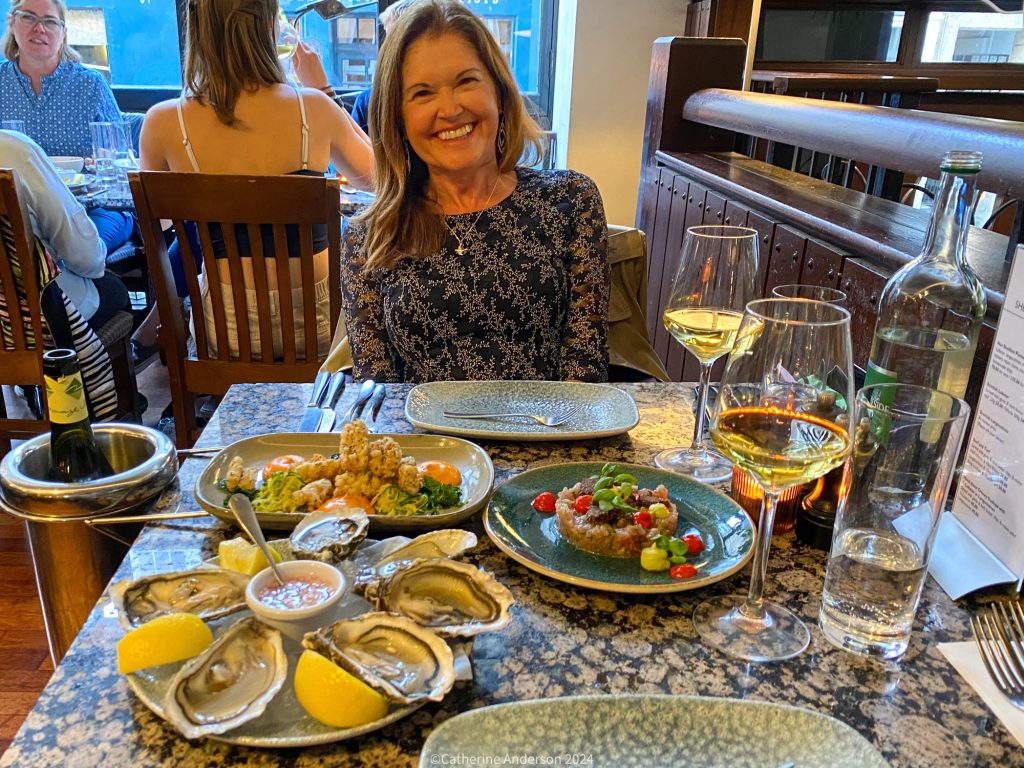
5 July: Edinburgh’s underworld
Edinburgh is a bustling and pedestrian-friendly city with a variety of shops, overlooked by the magnificent castle on top of an extinct volcano.
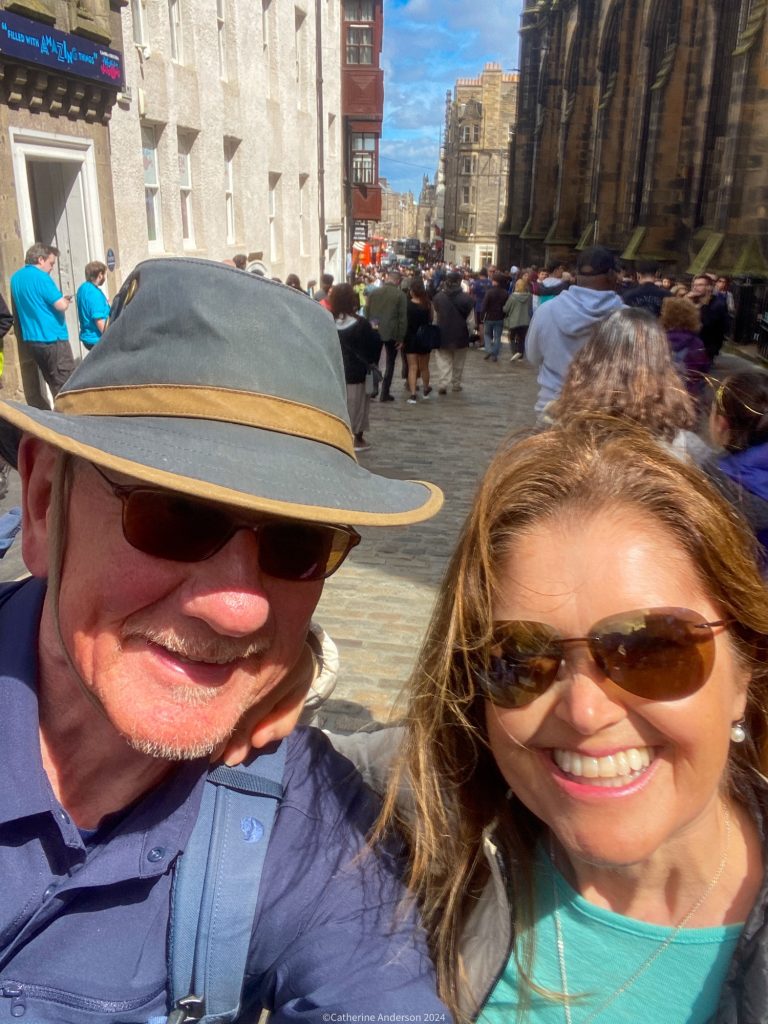
It’s been a few years since we last explored this friendly city, and (although some of the local residents could have done with subtitles) it was great to see new things. After a morning of Mr A satisfying his outdoor shop addiction, we attended a tour of one of the ‘underground streets’ of Edinburgh, a 1600s laneway which had been compulsory purchased and used as foundations in the 1700s to create a new indoor marketplace.

The Real Mary King Close – named after Mary King, a fabric merchant who built her own business after her husband’s death, a tour of the close is brought to life by one of the costumed character tour guides. Image source: Forever Edinburgh
The history was fascinating, and it was incredible exploring the low ceilinged rooms and even seeing the hand printed walls still preserved after all these years. It was presented in a somewhat theatrical way, with our guide dressed up and performing as though she was a resident from the lane which distracted a little from the interesting stories.
Dinner was at Sen, a little independent Vietnamese in the University Quarter. The food and menu was so delicious and interesting, we decided to book in for the following week too!
6 July: Another day, another flight
And so off we went to our ultimate destination, the Orkney Islands. It was a quick flight from Edinburgh to Kirkwall, and then a 10 minute taxi ride to our accomodation. The aerial views as we crossed the archipelago were magnificent, with turquoise waters lapping on white sandy beaches. The only thing missing was woodland. We could see the islands stretching across into the horizon, with barely a tree in sight.
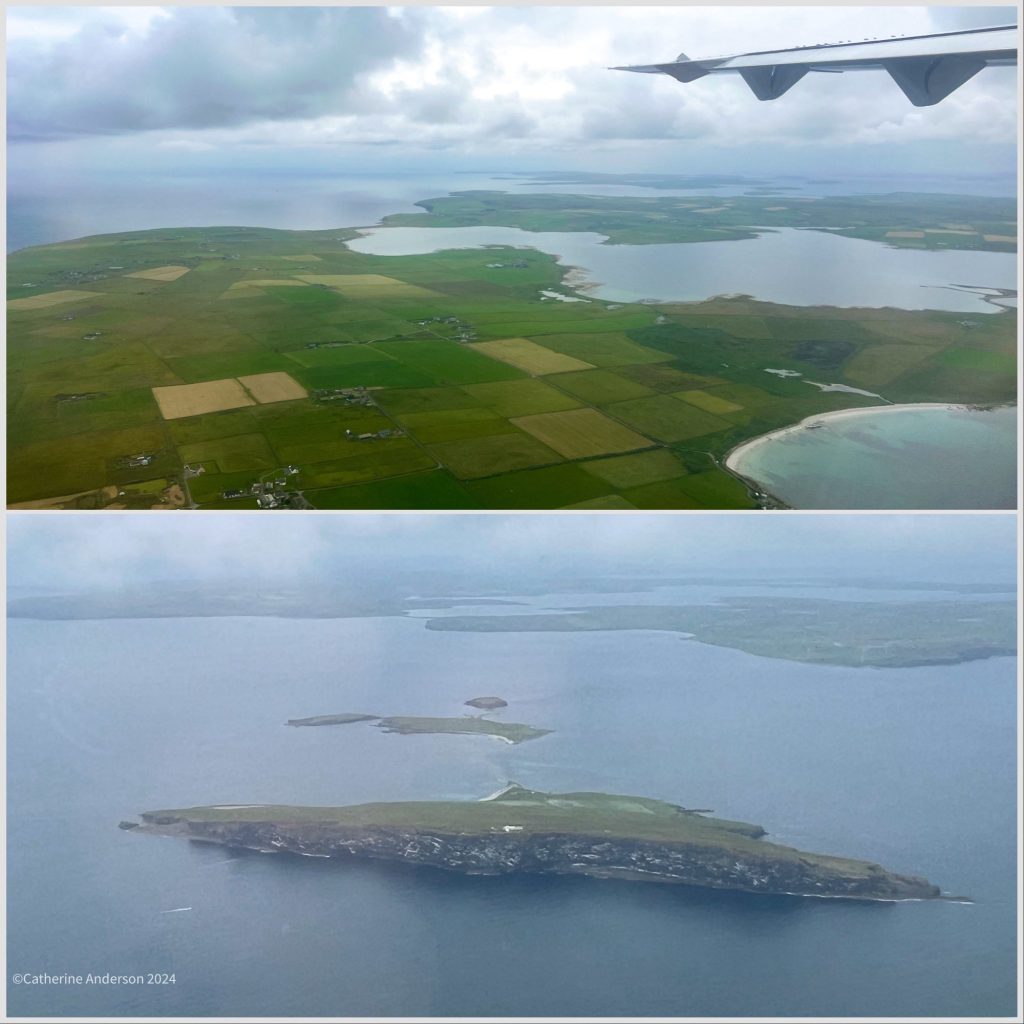
Our first impression of Kirkwall was somewhat grey and unremarkable. The majority of houses are single storey bungalows, or semi-detached, looking like they are on a 1970s council housing estate. Most have been rendered with pebble-dash, and together with the grey skies, and icy-cold July wind, made for a not-so good first impression.
We had dinner in town, the first of many dishes of hand-dived scallops, a speciality the Orkneys are famous for, and met our group guide at 9.30pm for a quick update on the plan for the following morning.
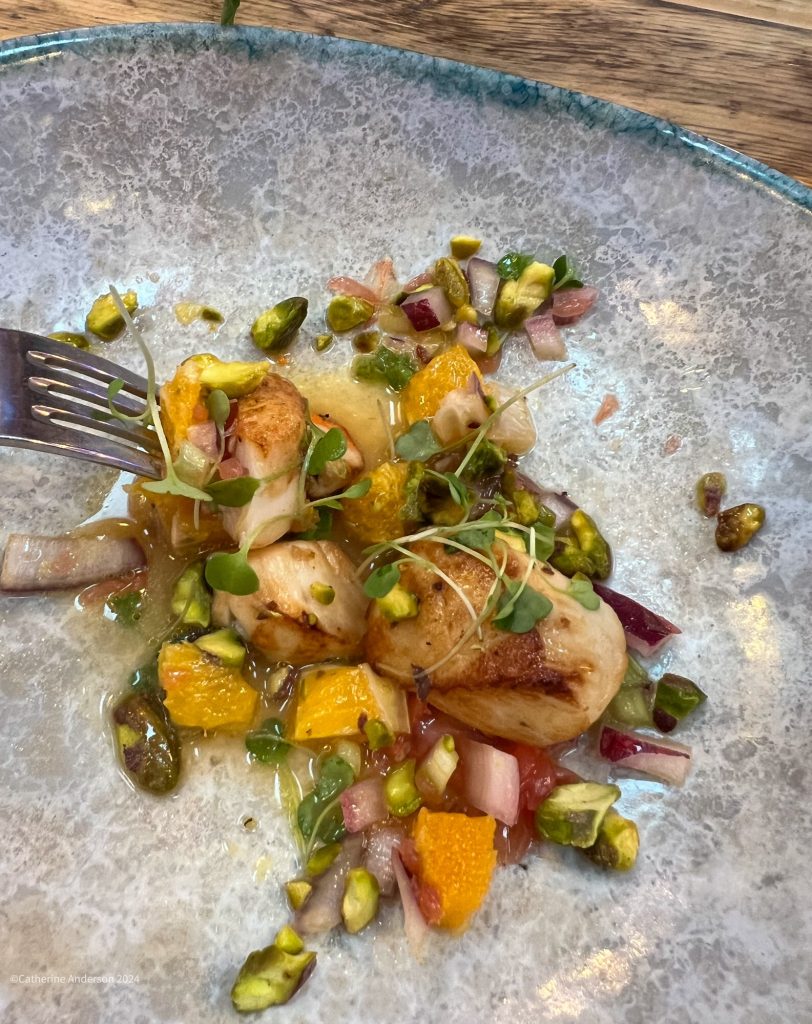
7 July: Westray reveals its wonders
It was an early start for a huge Scottish breakfast, before loading our walking and photography gear into the back of a mini bus and meeting our fellow hikers for the week; three single ladies, one single man and another couple. The supermarket was our next stop, to pick up yet more food to make up our picnic for the day. This pattern continued all week.
Next it was off to board our ferry to the Isle of Westray, a 90 minute ride away from Orkney Mainland.
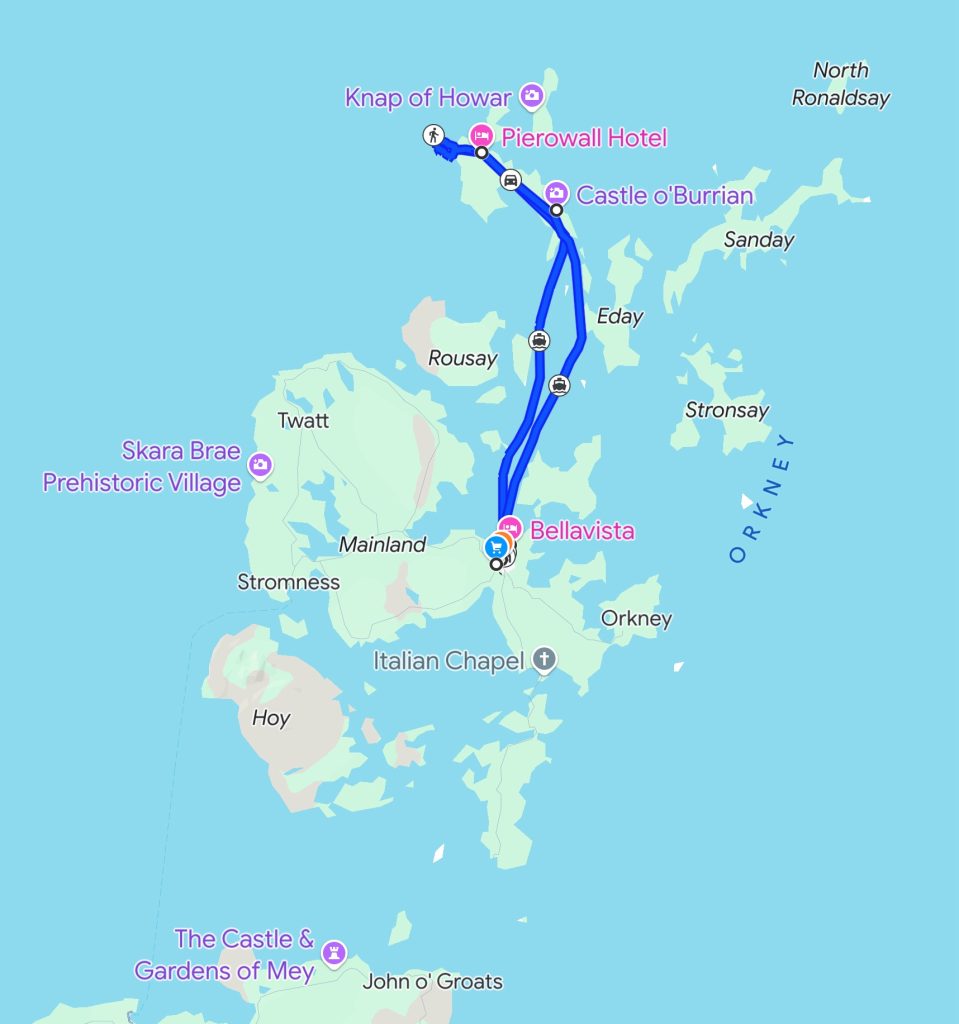
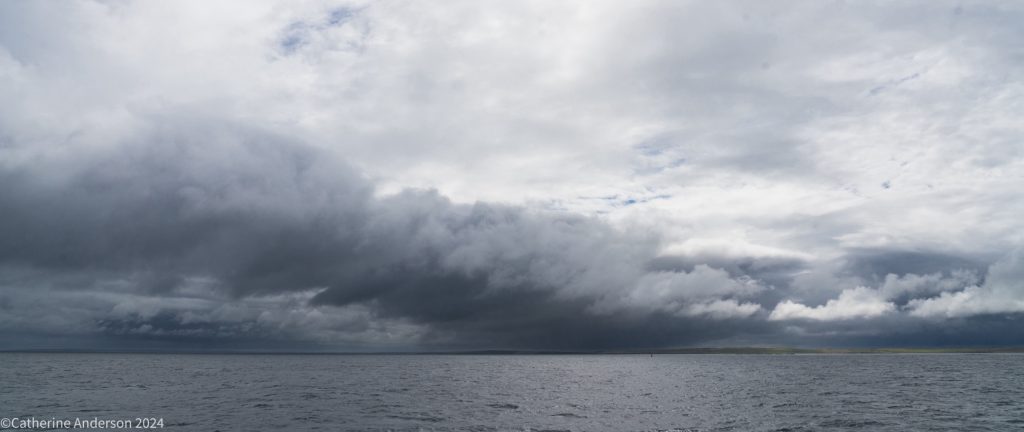
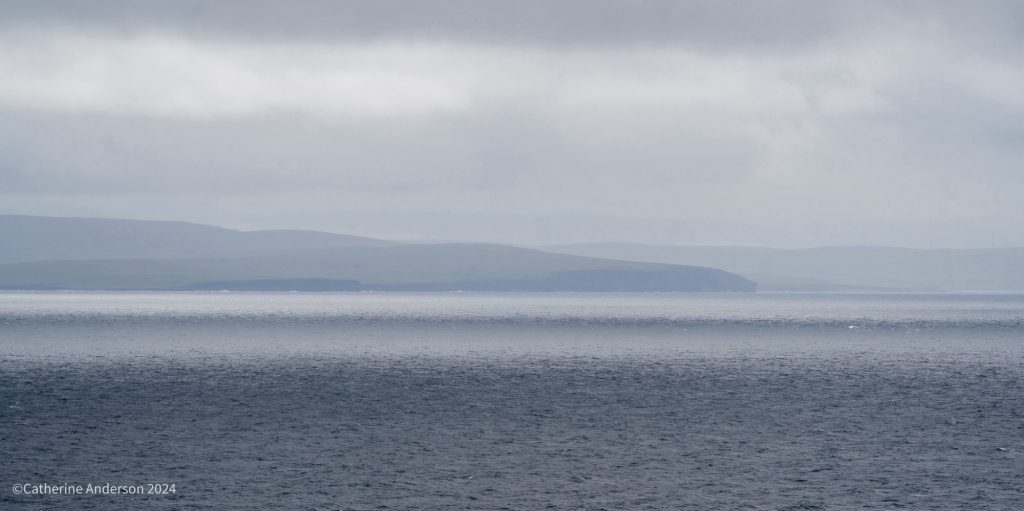
Once there, we drove up to the north of the island, where we parked up, donned our backpacks and took off on a hike.
There was little else around us, the occasional farmhouse and plenty of cattle and sheep. No other people to be seen.
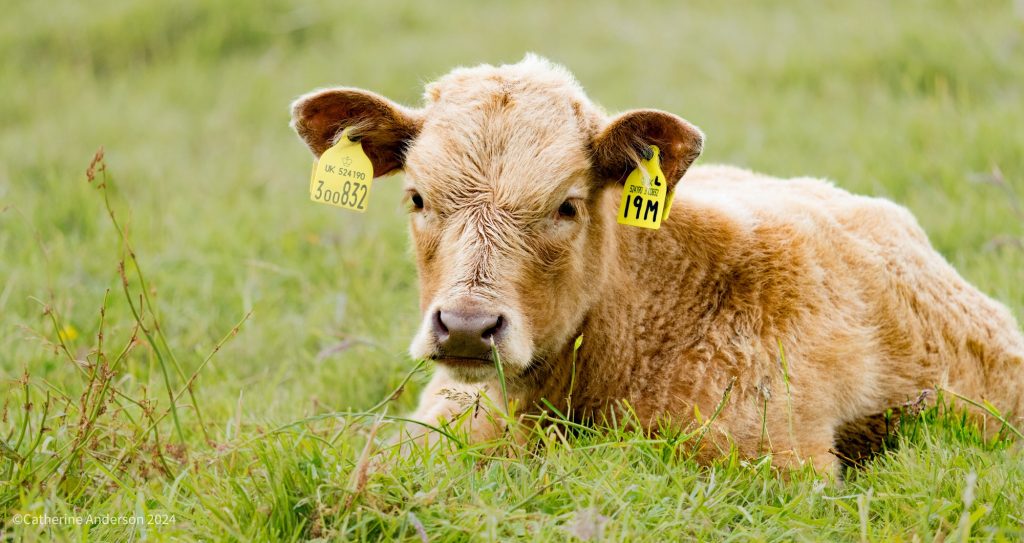
I was carrying my telephoto lens on this walk, so was hopeful for no rain. We had been told this was a great nesting area for seabirds, including Arctic Tern, Northern Gannet, Common Guillemot, Kittiwake and the much anticipated Atlantic Puffin.
Arctic Skuas, known as the pirates of the coast, soared along the coastline, ready to thieve the freshly caught fish from other birds.
We followed the coastline, seeing that breeding season was in full swing, with birds perched precariously along the cliff side with their young looking small and vulnerable with the huge drop below.
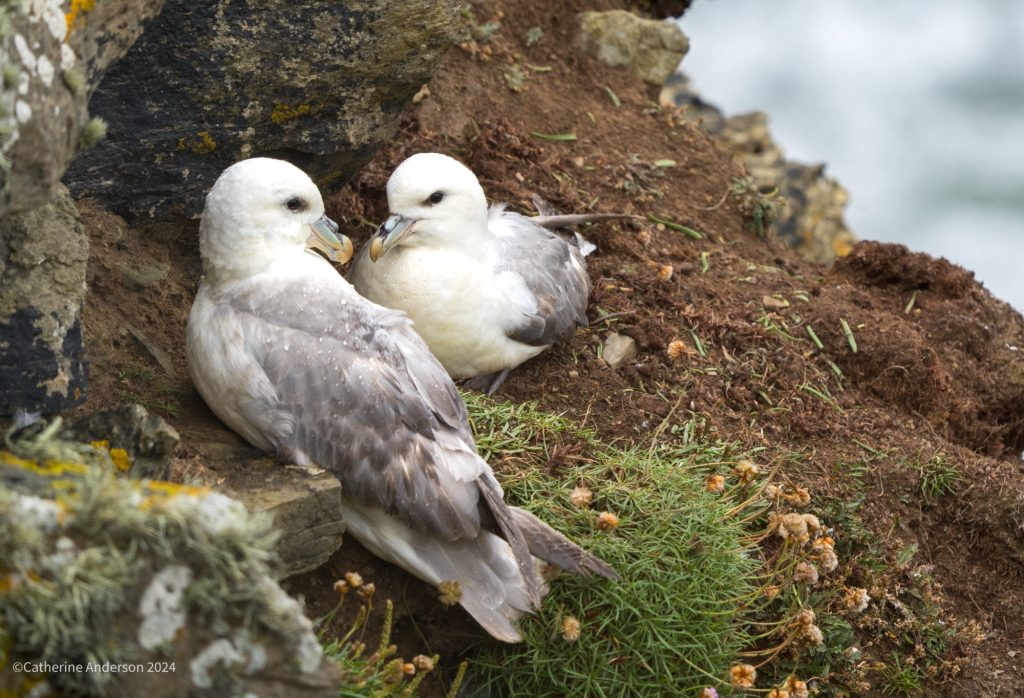
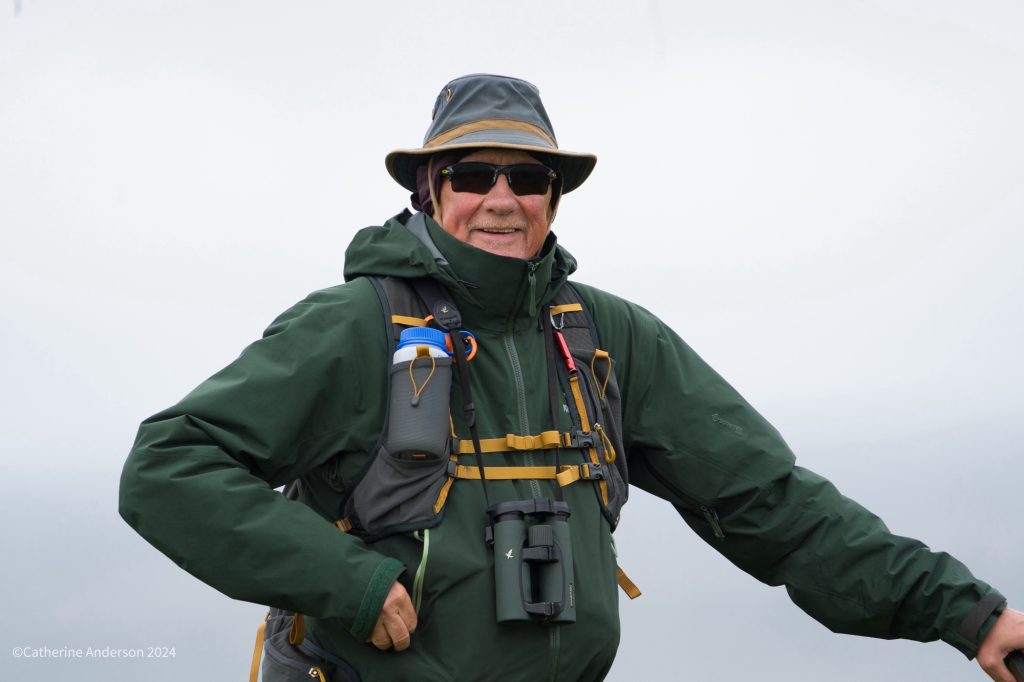
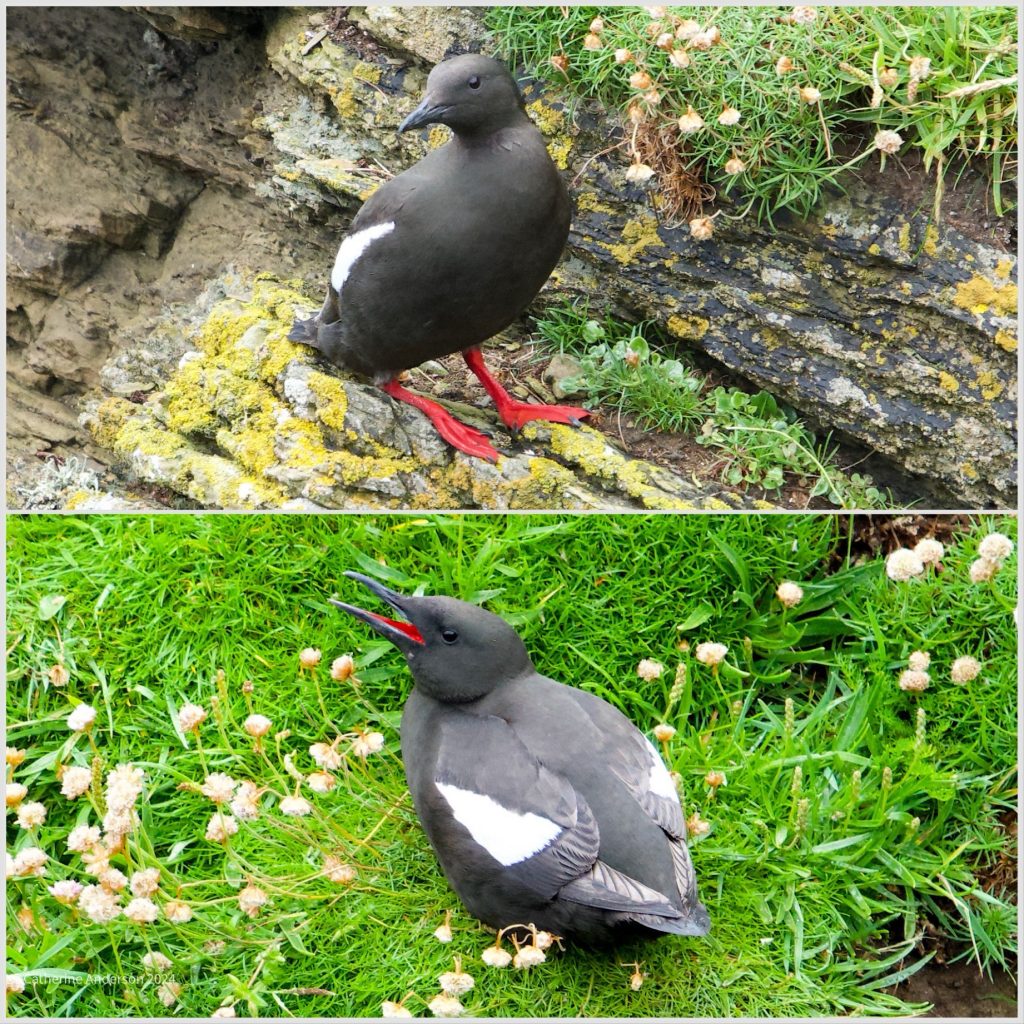
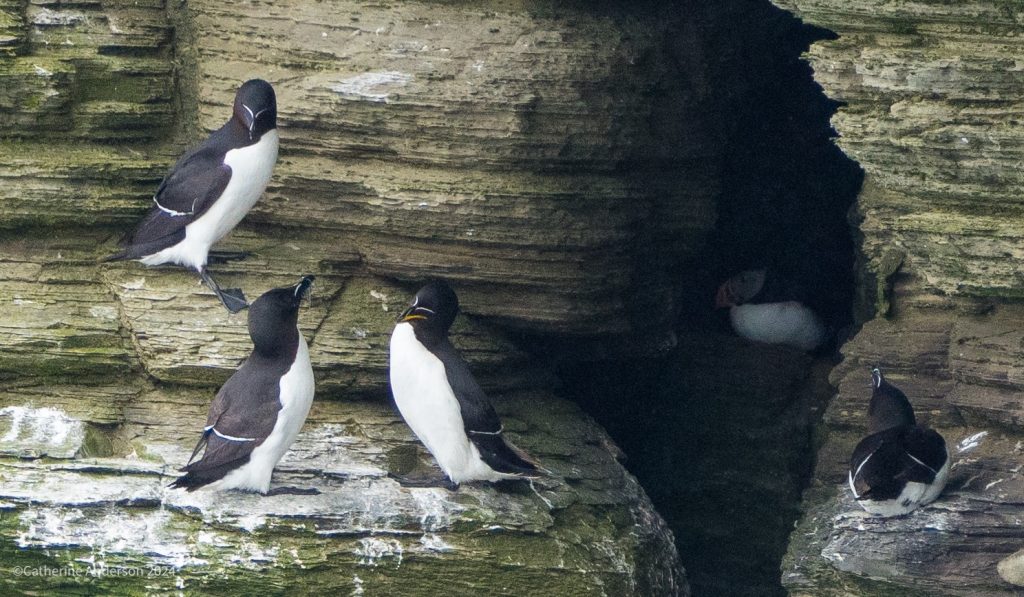
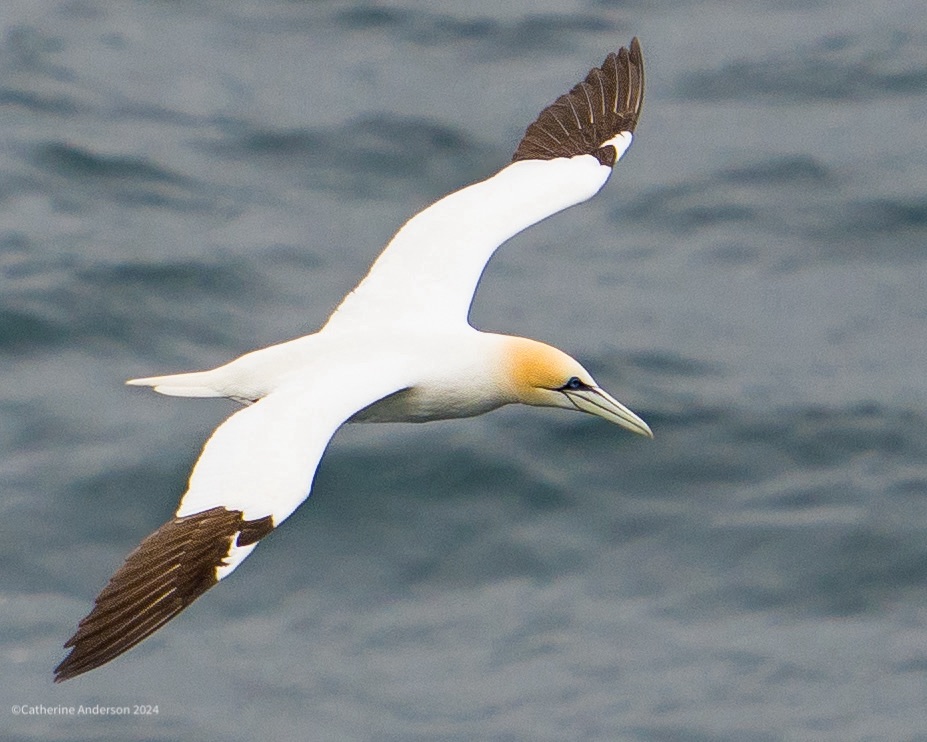
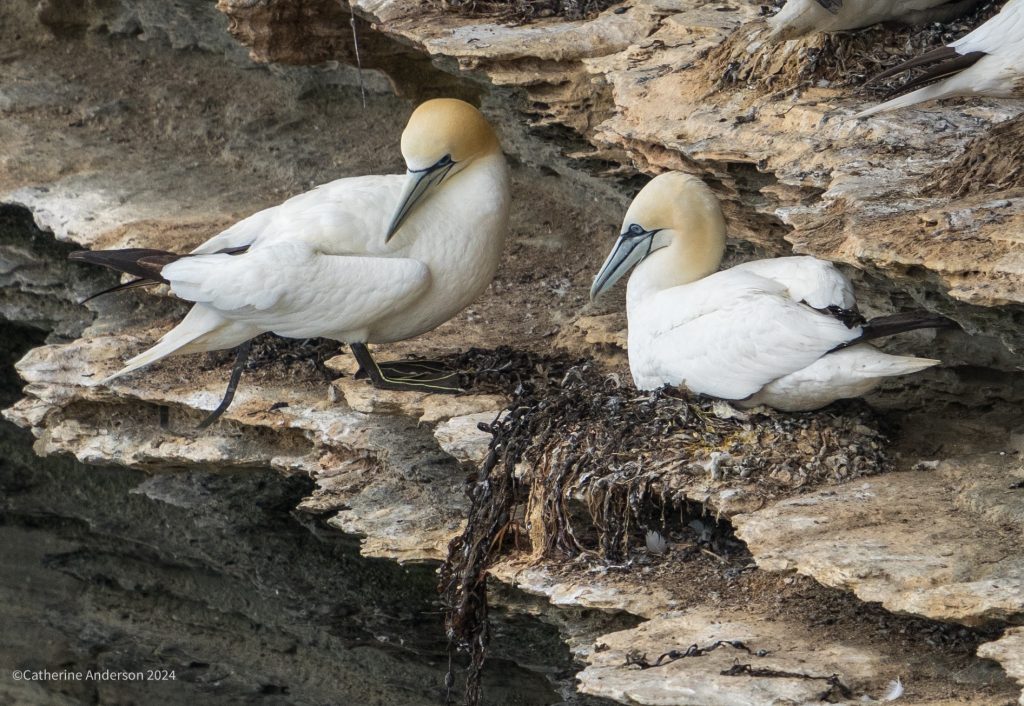
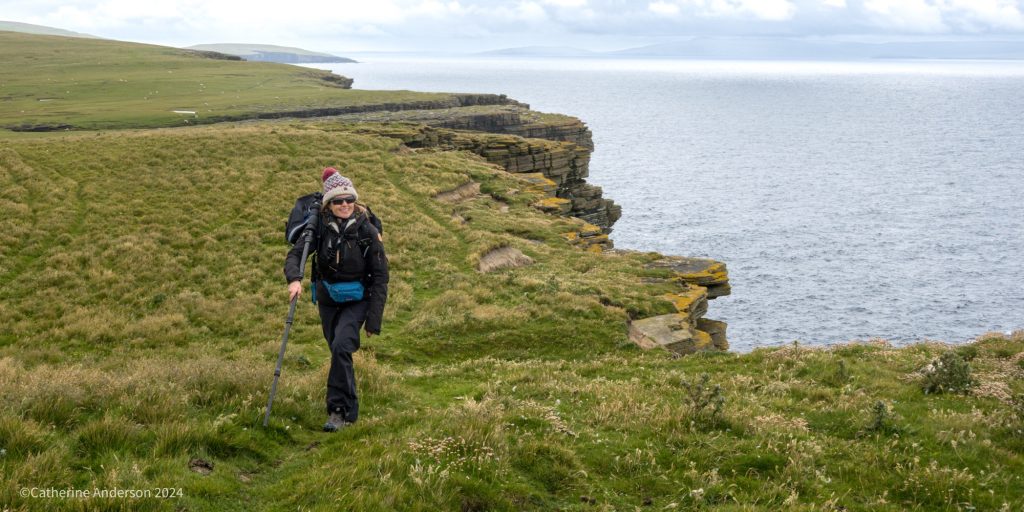
We were dressed up warm against the cold wind that seemed to be ever present in the Orkneys, the treeless land offering little shelter or resistance, but once mesmerised by the birds, forgot all about the temperatures.
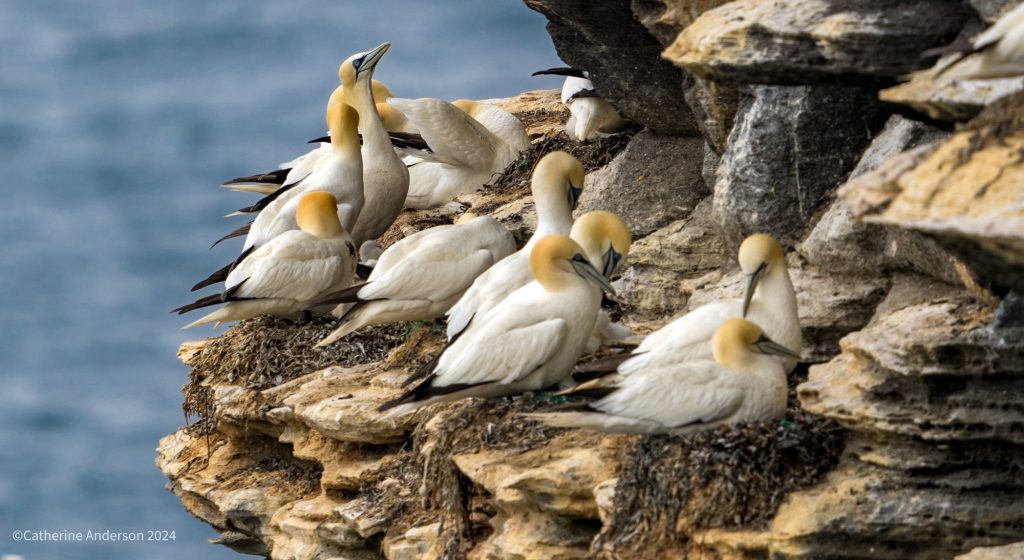
And, of course, the Puffins! They showed up in their comical way, like little clowns with their brightly coloured beaks and legs and yellow cheek spots.
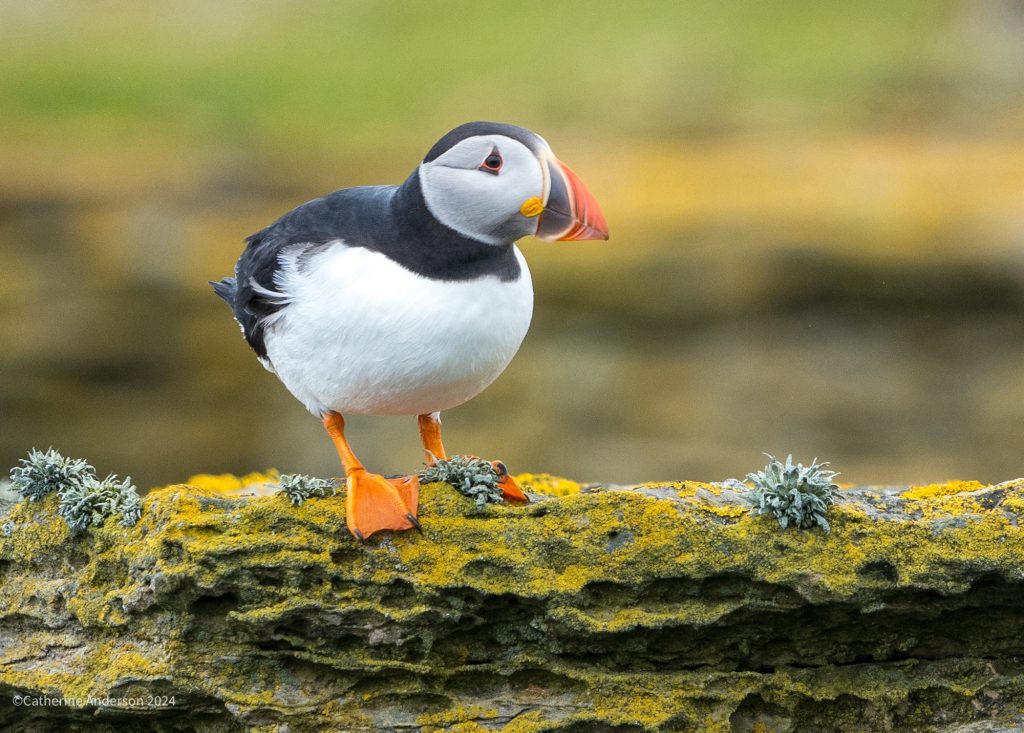
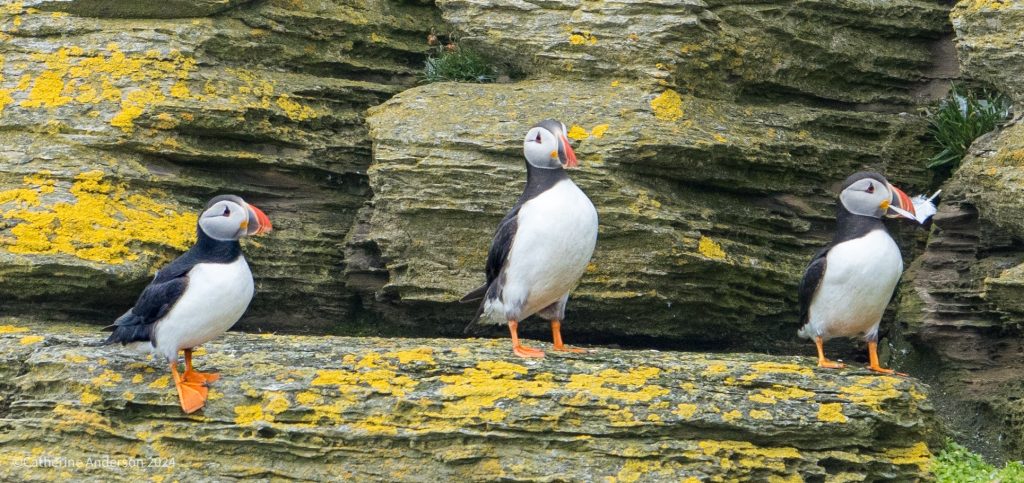
It was hard to tear ourselves away, but after consuming our lunches we continued on our walk.
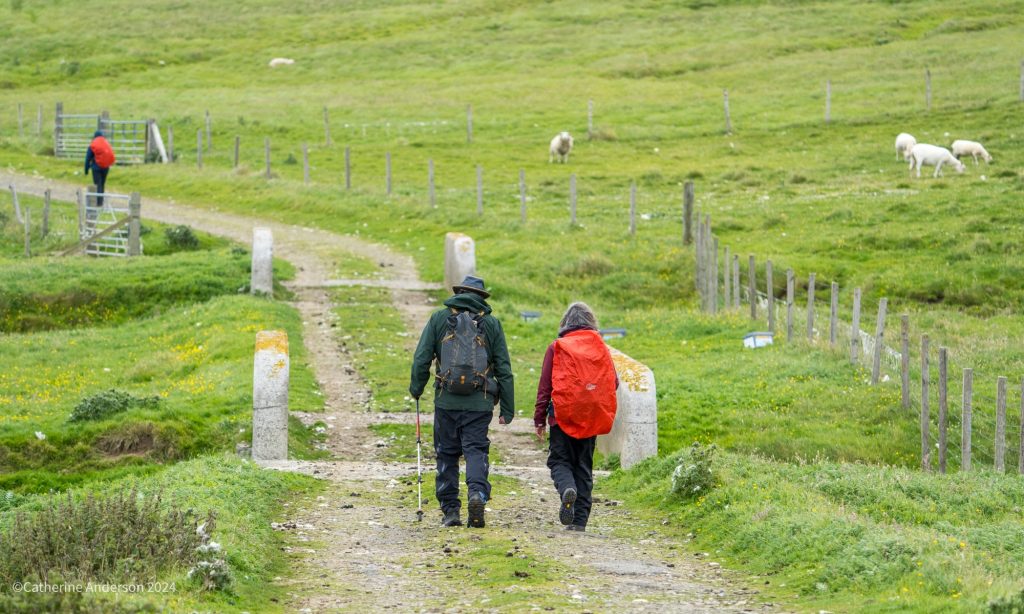
A short drive in our minibus took us to the ruins of a castle with a chequered history. Noltland Castle was built for Gilbert Balfour, master of Mary Queen of Scots’ household in the late 16th century. Apparently 71 gun holes dot the walls, making it as much of a fortress as a manor house. Apparently he was quite paranoid about being murdered!
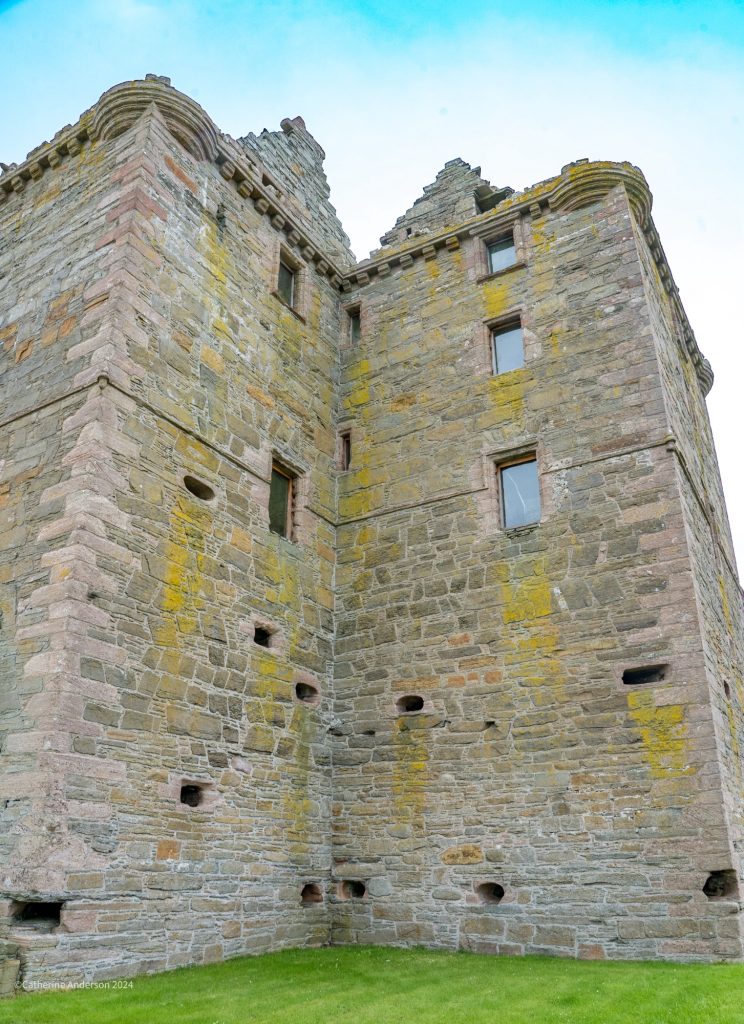
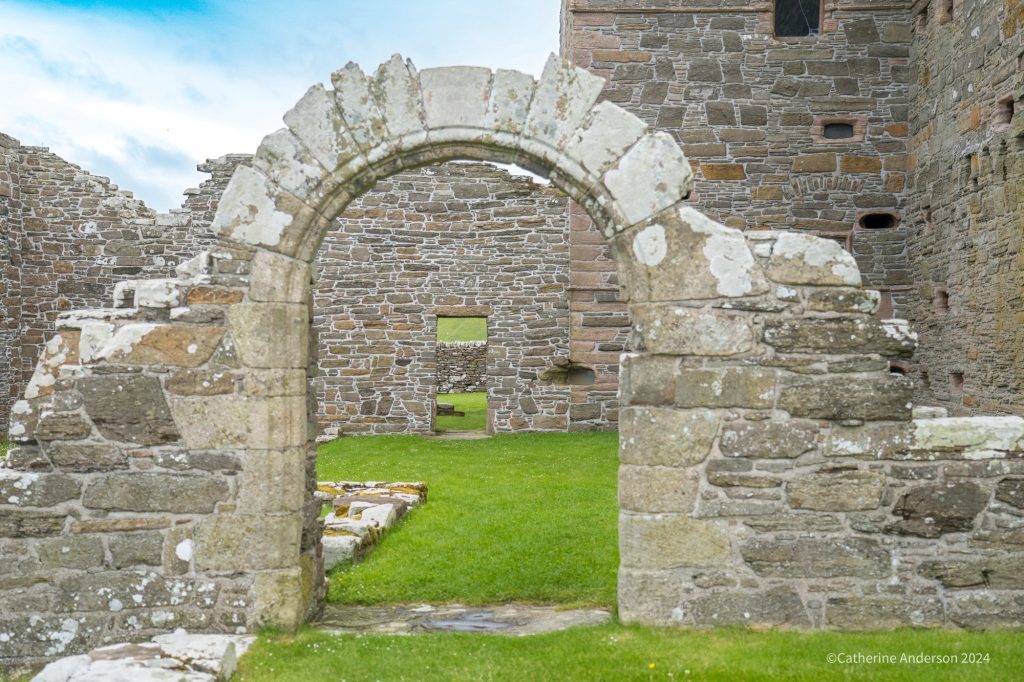
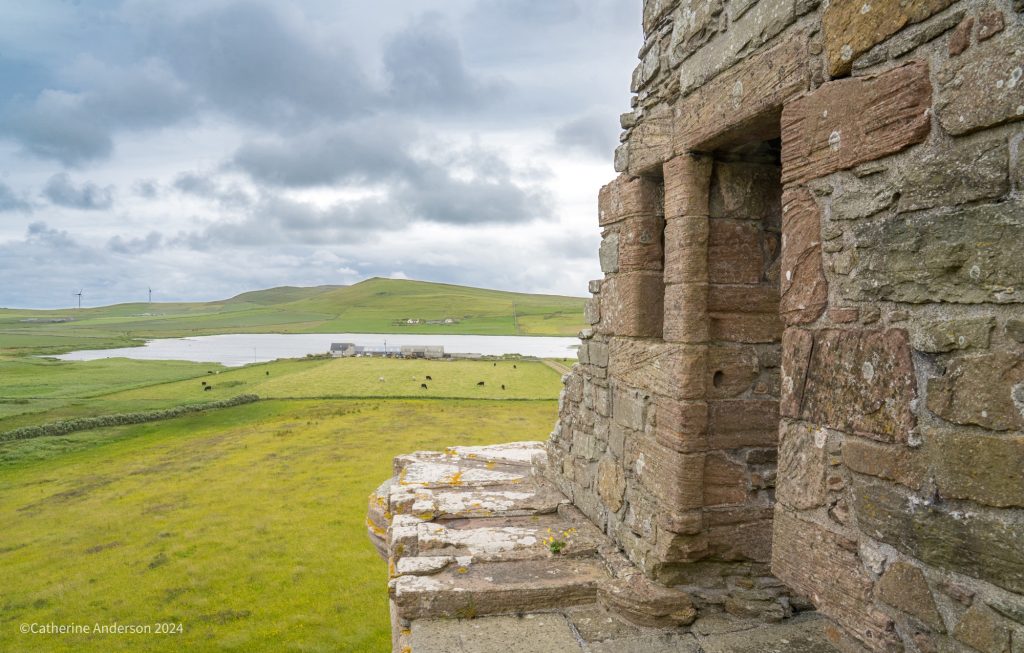
After leaving this castle, we were taken on a short walk to another one – Castle o’Burrian, a squat sea stack with a bustling Atlantic Puffin colony. We sat on the cliff edge watching in wonder at the birds as they made their clumsy, fluttering flight, sitting amongst the sea pinks and grasses, and taking many photos.
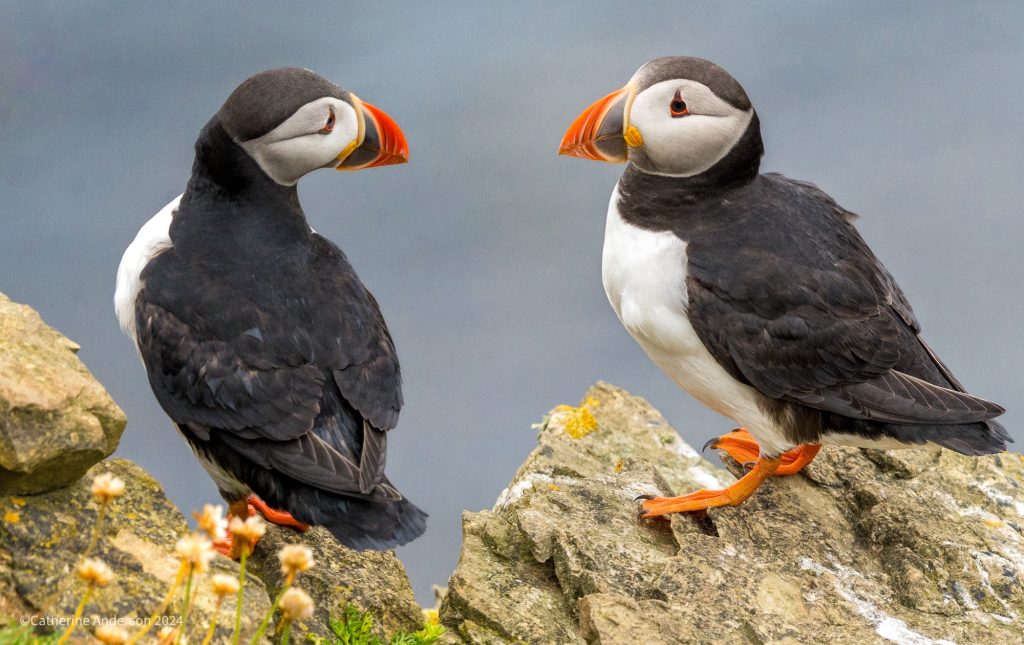
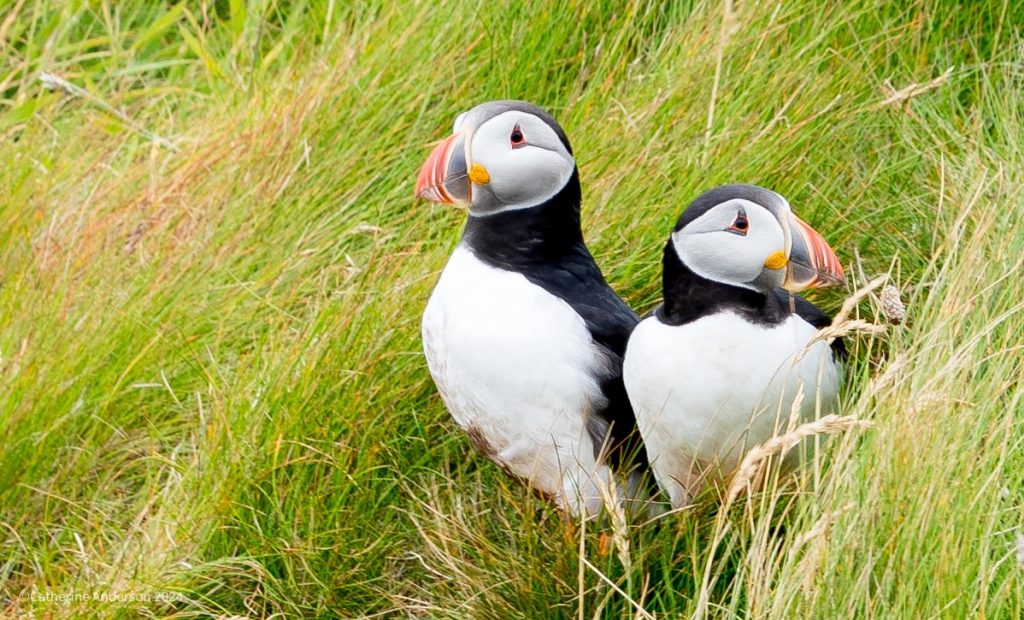

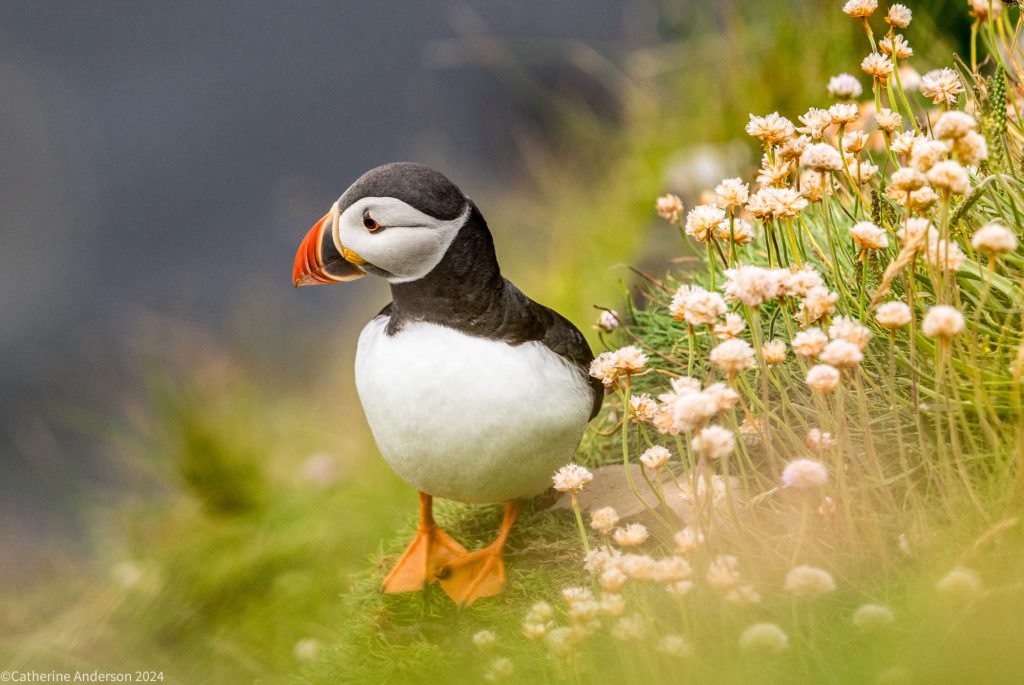
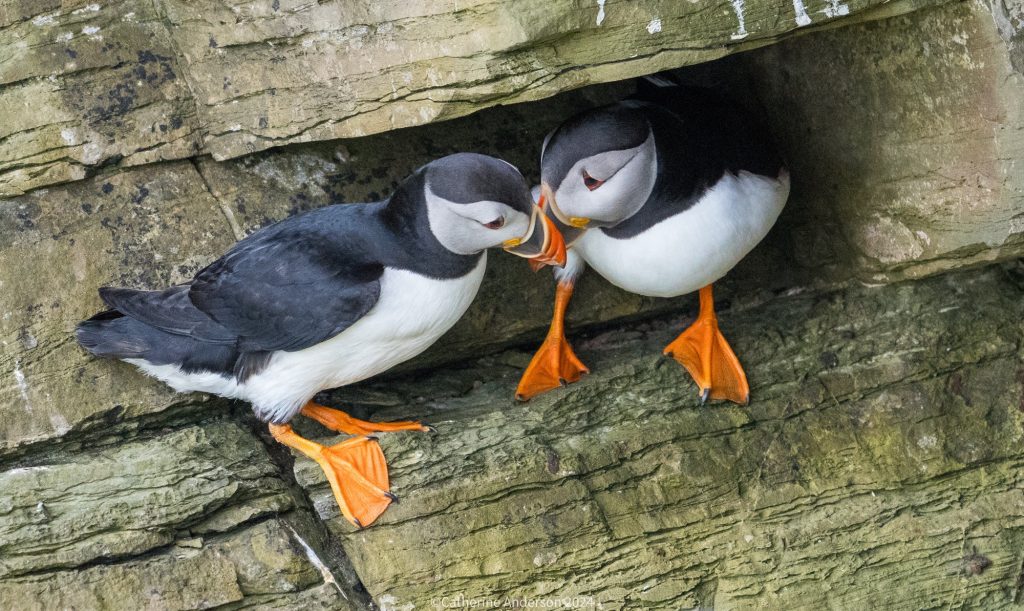
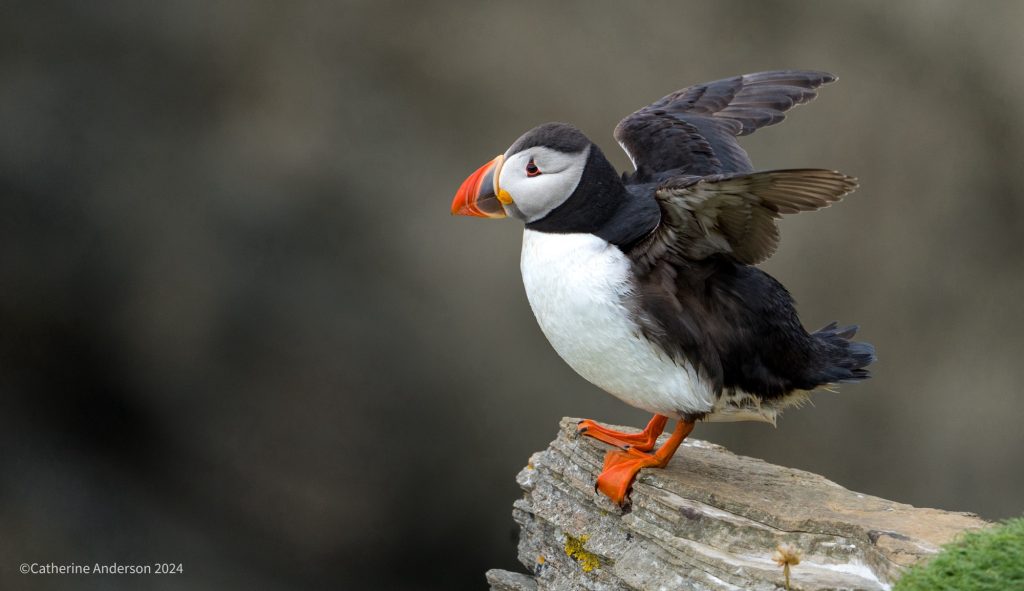
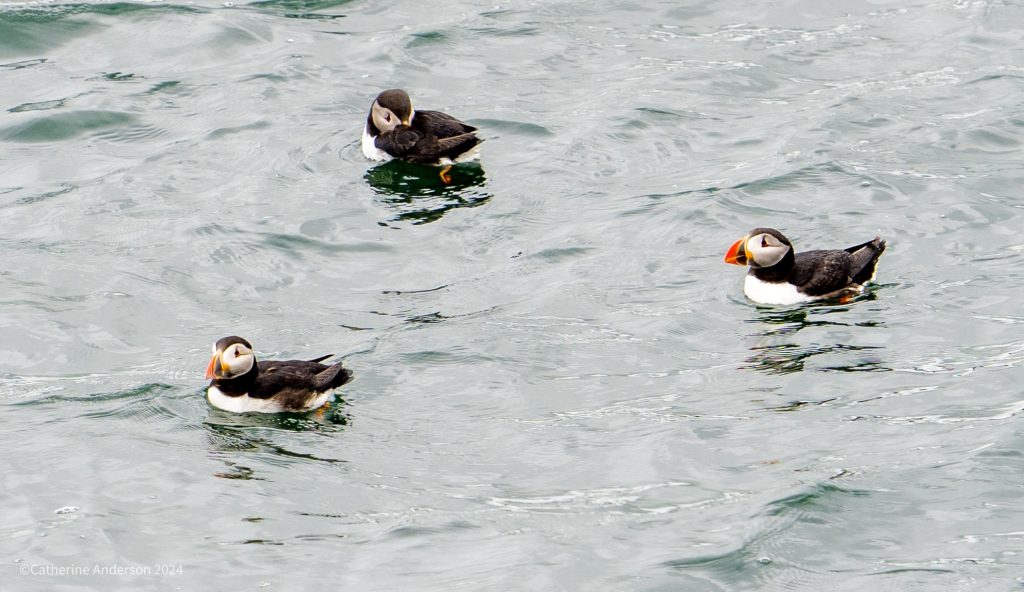
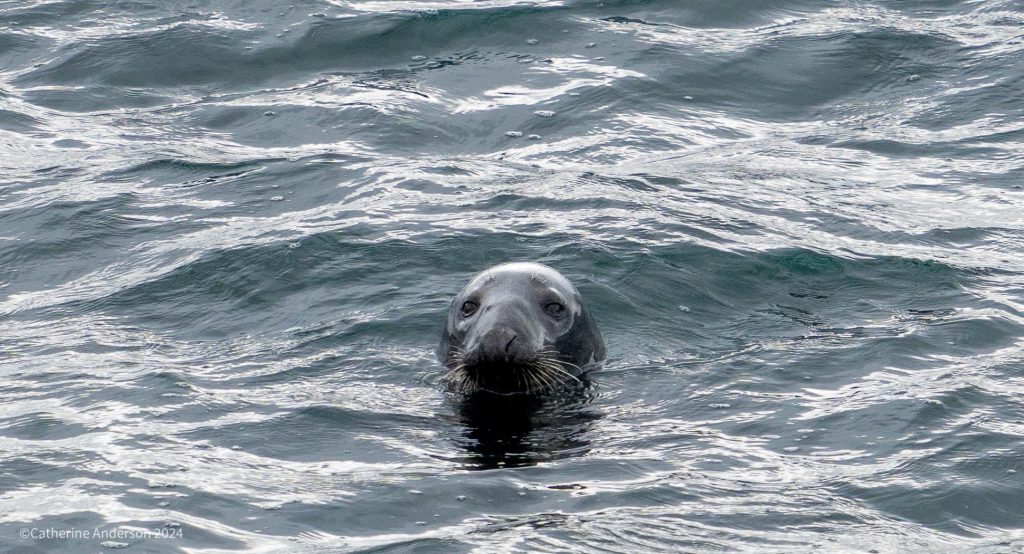
Our final destination before our journey back was to a tiny museum which, among many other incredible discoveries, housed Scotland’s earliest representation of a human form, uncovered at an archaeological dig in 2009.
A ferry back to Mainland, and dinner in a local restaurant concluded our day by 10pm, just in time for sunset.
8th July – Scara Brae and Stromness
Our start was a little later this morning, as we didn’t need to catch any ferries, our day entirely on Mainland.
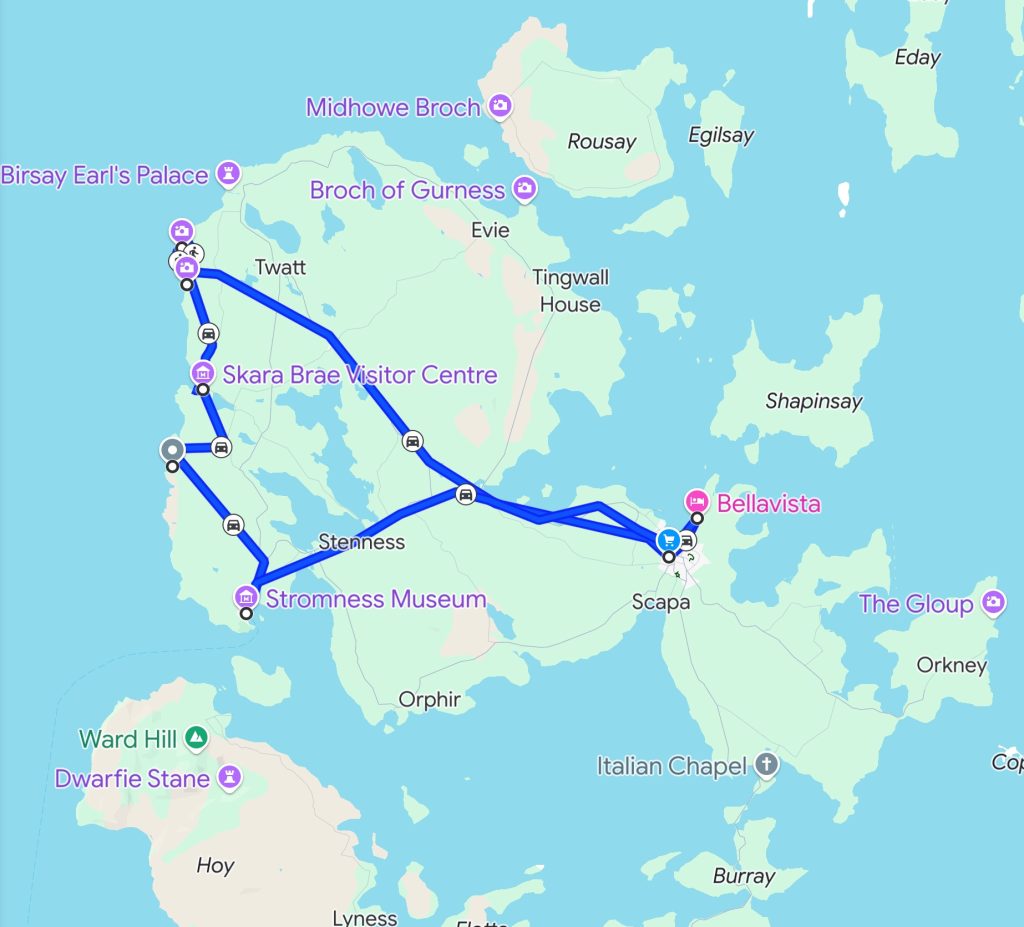
The day dawned bright and sunny, and although the wind remained, it felt quite a bit warmer and so one or two less layers were donned.
We started off with a drive across to the north-west of the island, where we did a spectacular coast walk to another major bird colony.
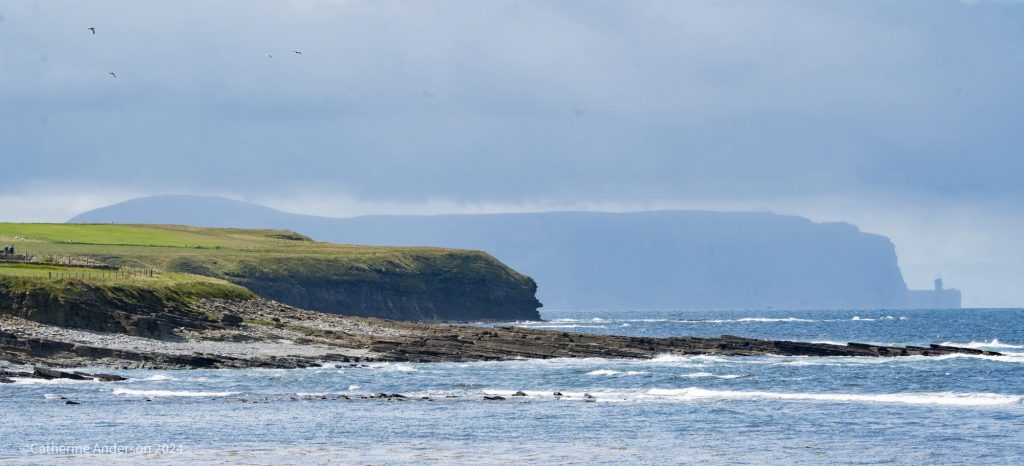
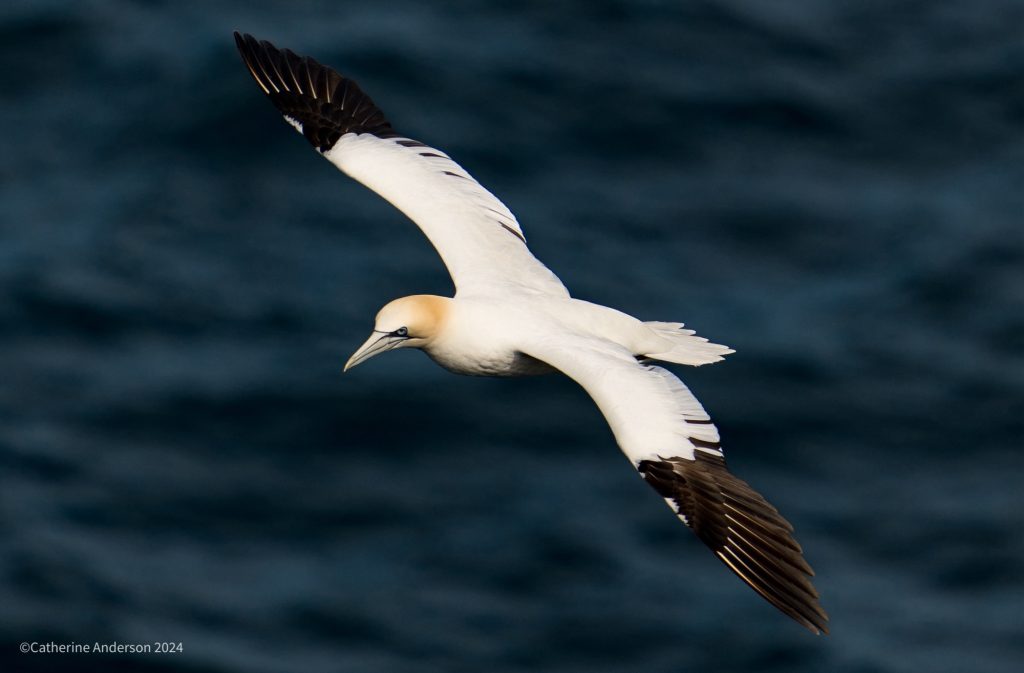
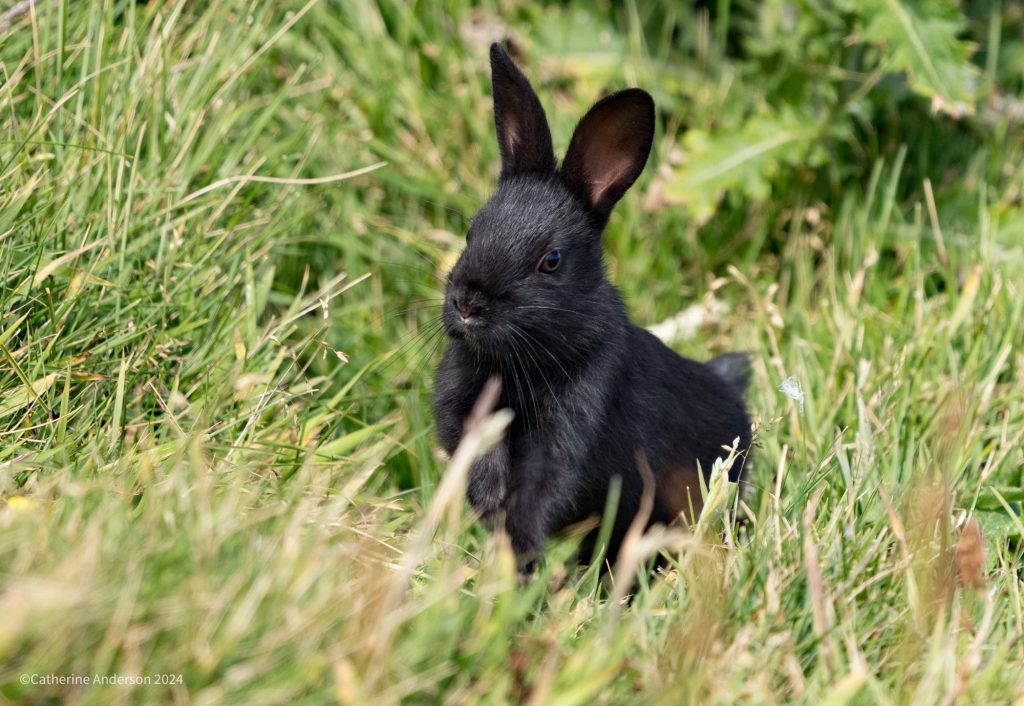
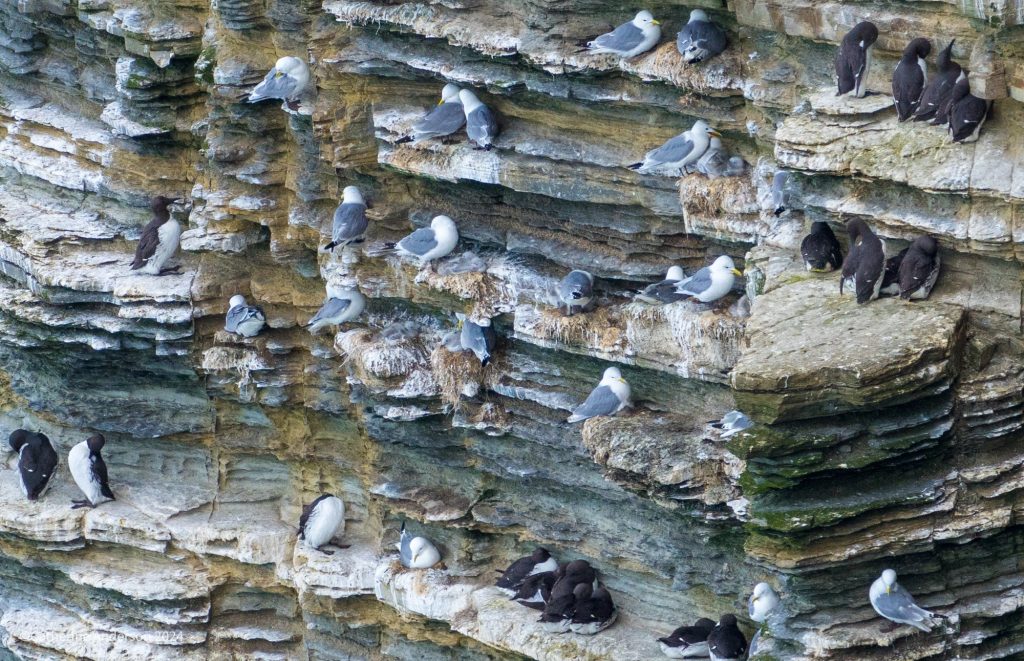
Finishing our walk we headed down to Sand Geo, a beach by some old fisherman’s huts for our lunch. Out of the wind it was almost warm! The huts themselves date to the 1800s and were designed as shelters for the local fisherman, house boats and equipment.
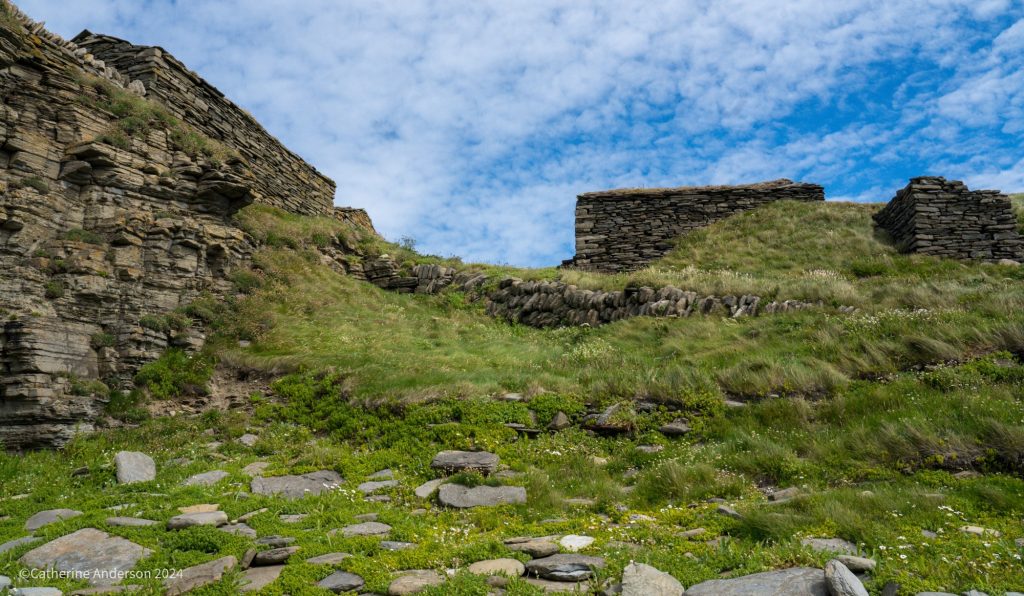
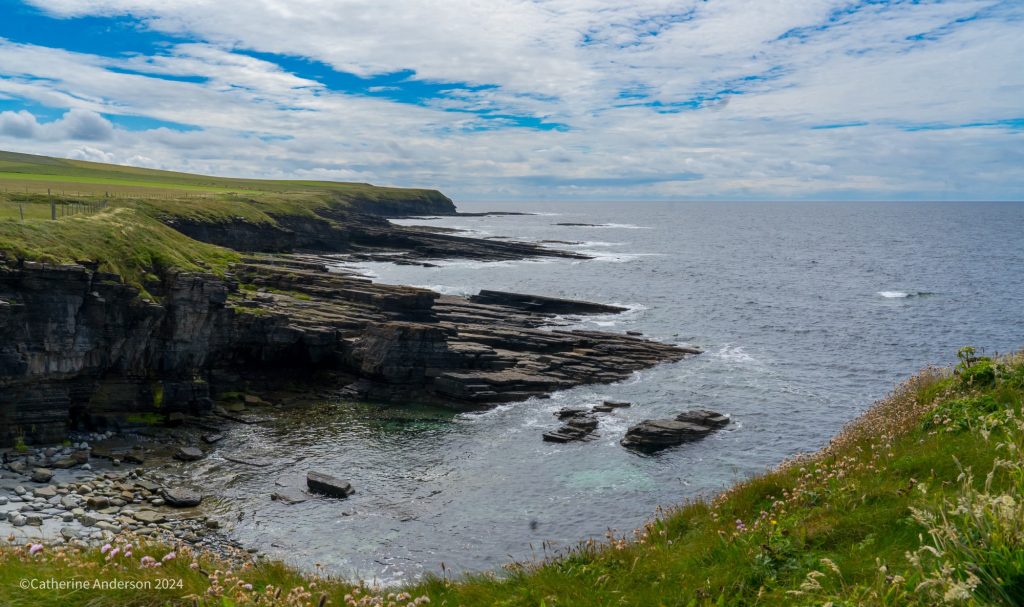
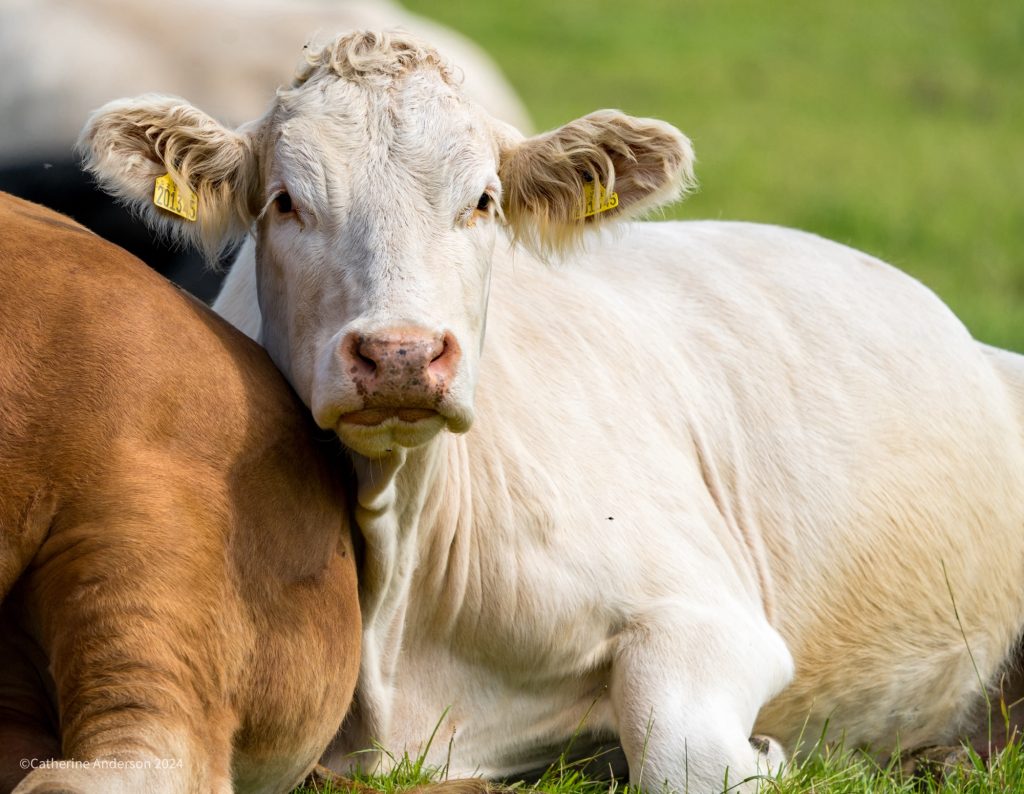
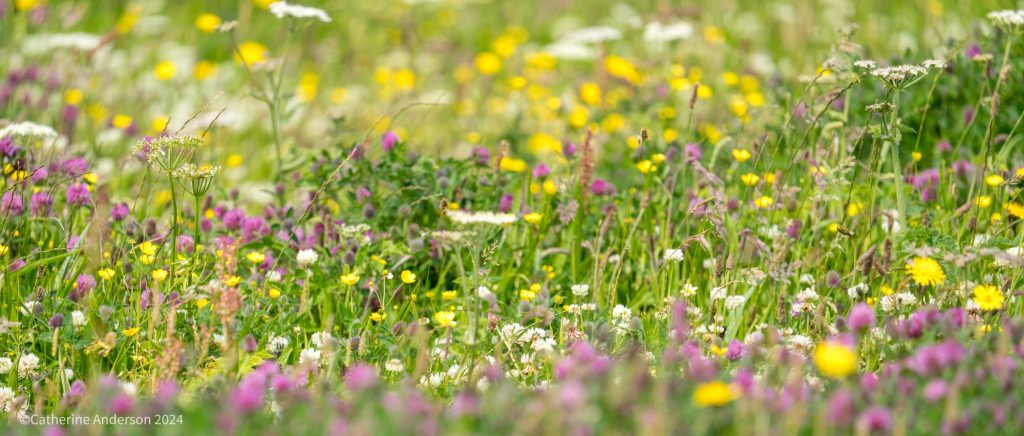
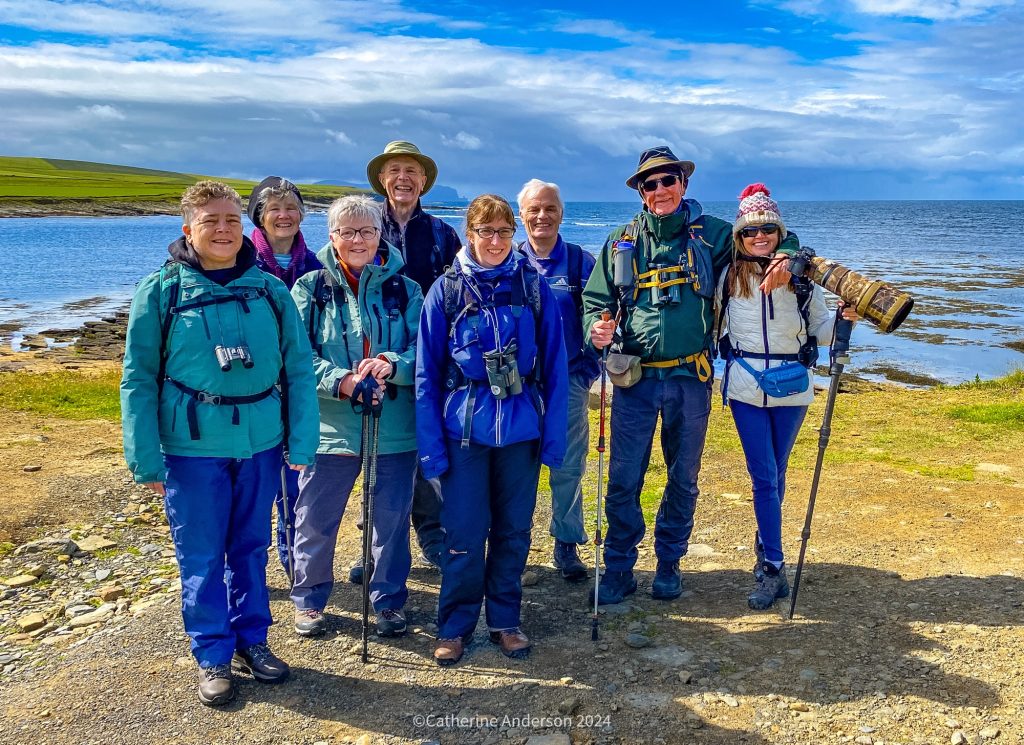
Scara Brae was our next destination, much anticipated and read about in advance, though once we arrived we realised that most of what we had researched was already out of date and superseded with new learning – even the information in the visitor centre was now out of date.
Scara Brae is Europe’s most complete and well preserved Neolithic village which literally emerged from the sand dunes after storms in 1850. You can almost imagine the amazement as literally overnight houses were revealed, complete with stone beds, dressing tables, fireplaces, drainage and even toilets were revealed. People would have lived here between about 3180 BCE to about 2500 BCE, and at the time the Orkney Islands would have been far further south, with a much warmer climate.
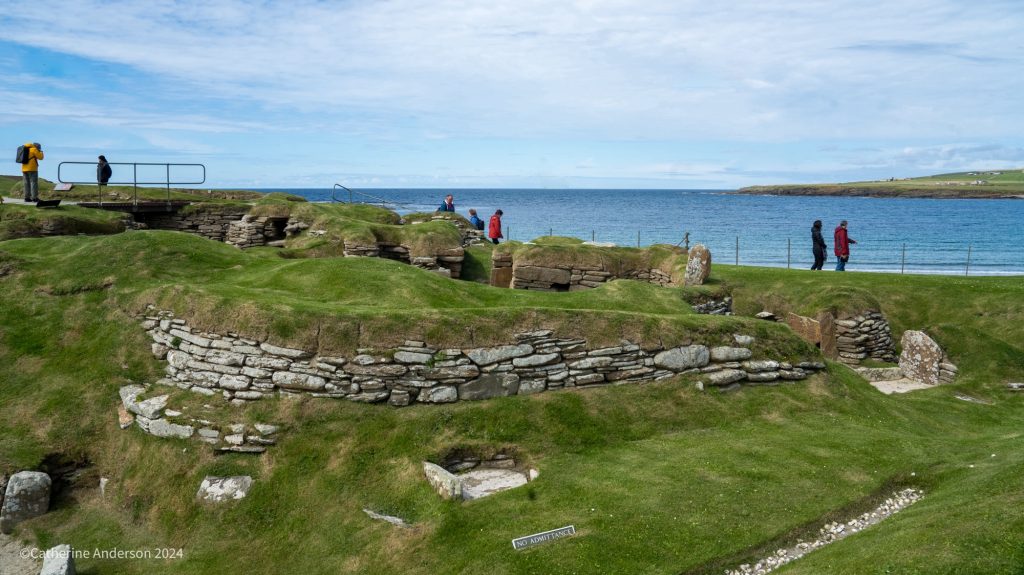
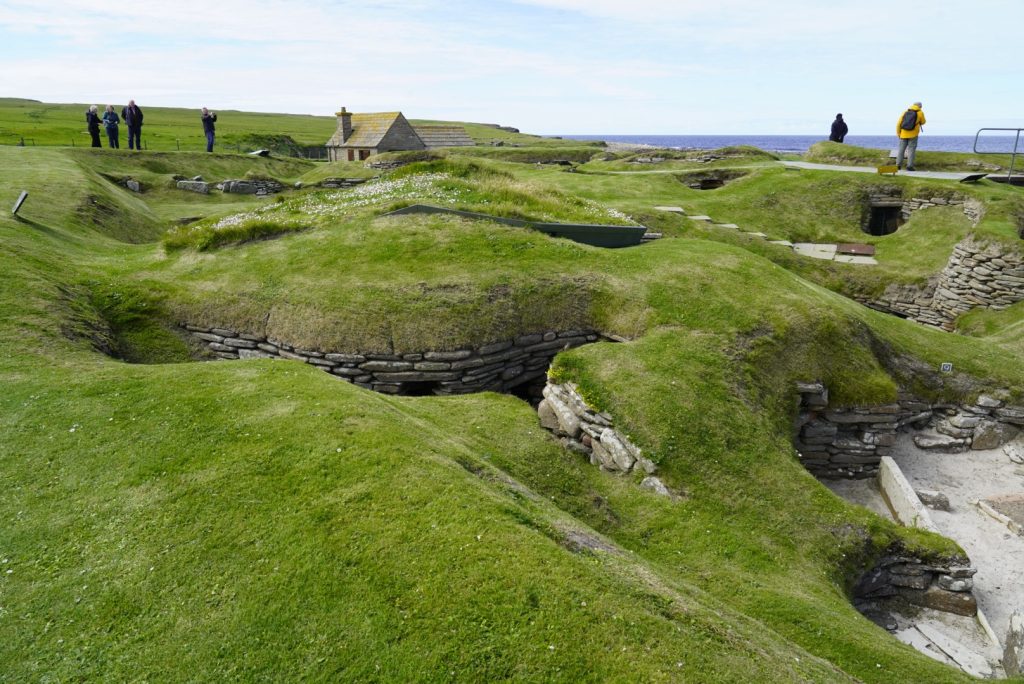
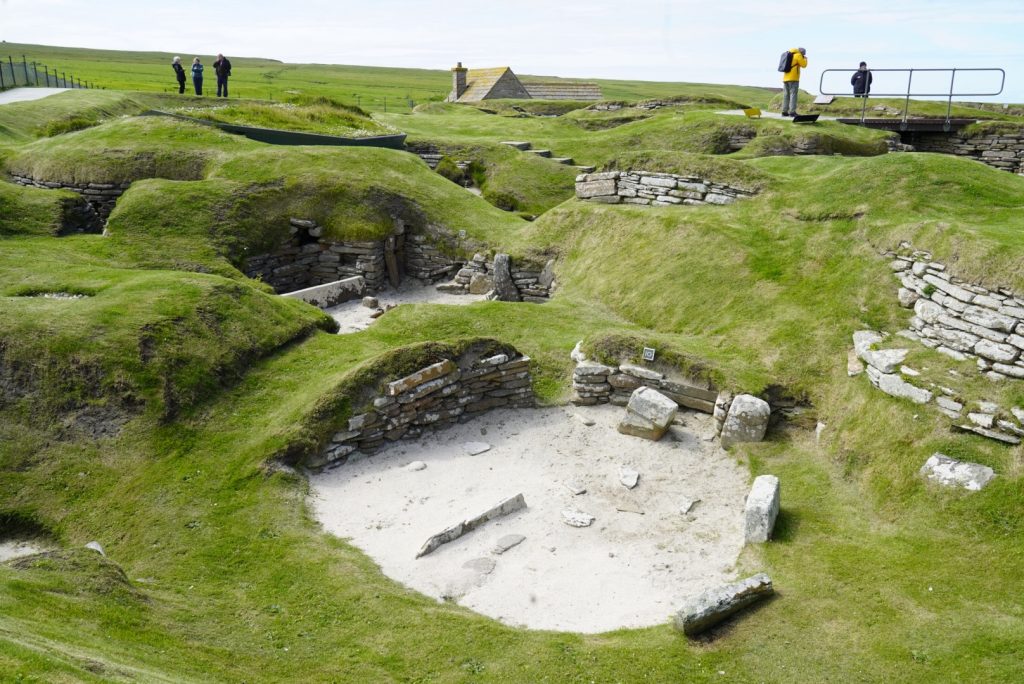
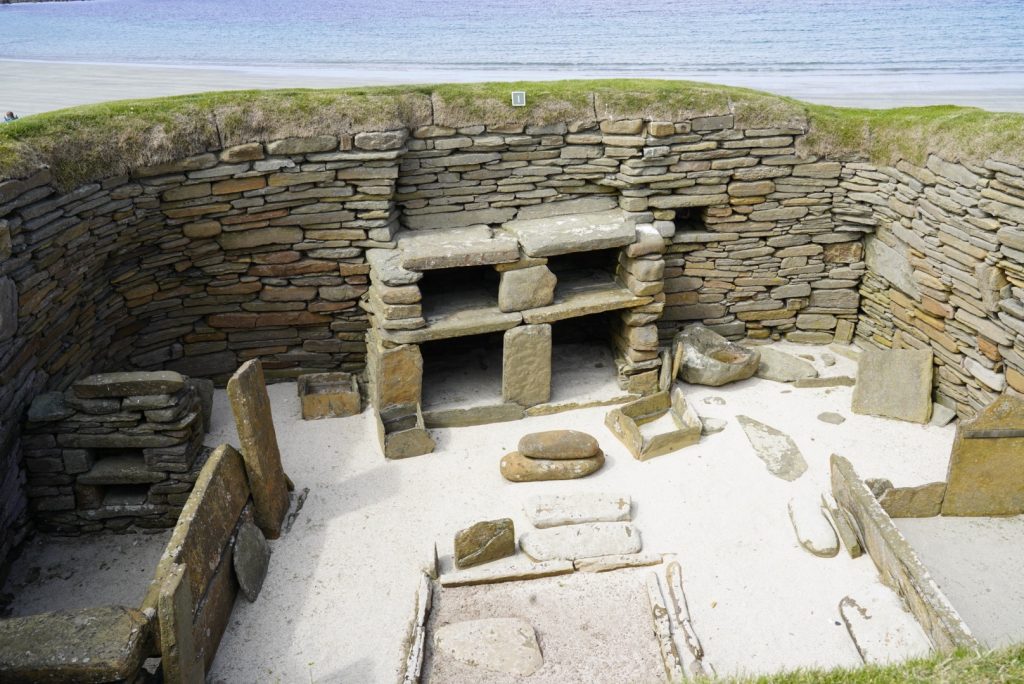
The house from which the village was first discovered is called Skaill House, and in it I was able to find a huge family tree on a wall which mentioned people on my family tree. By this stage I have lost trace of what relative Bishop Honeyman was, but we certainly have Honeyman genes in us somewhere!
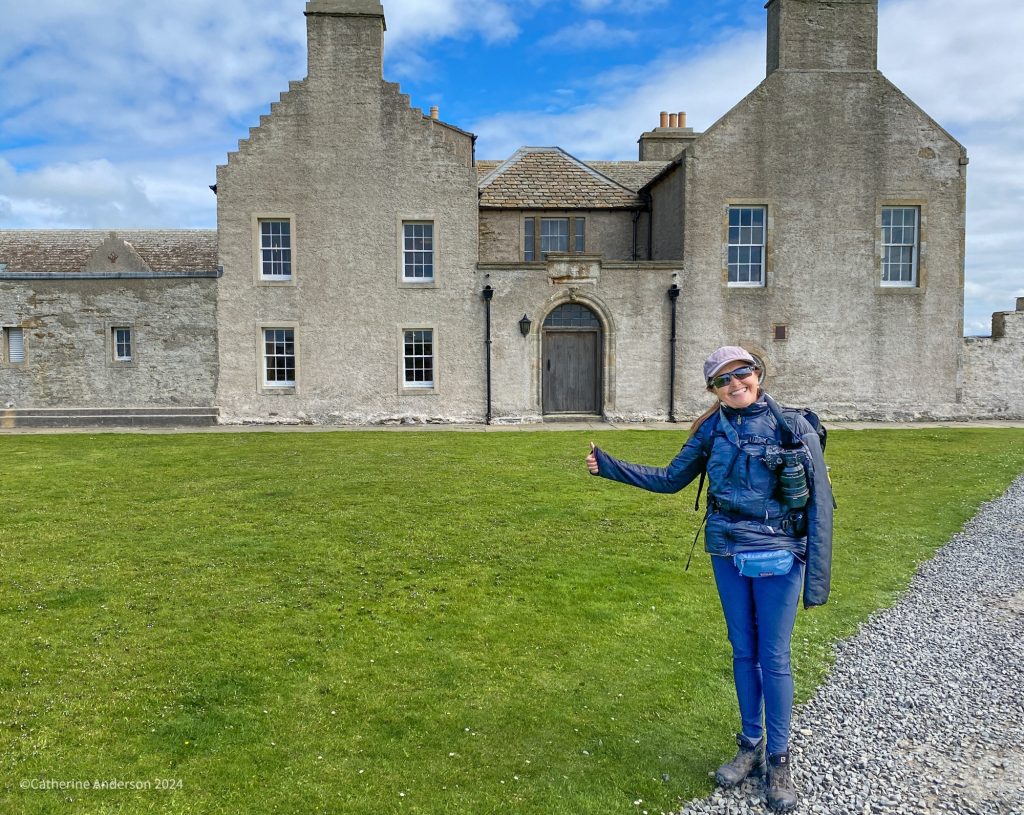
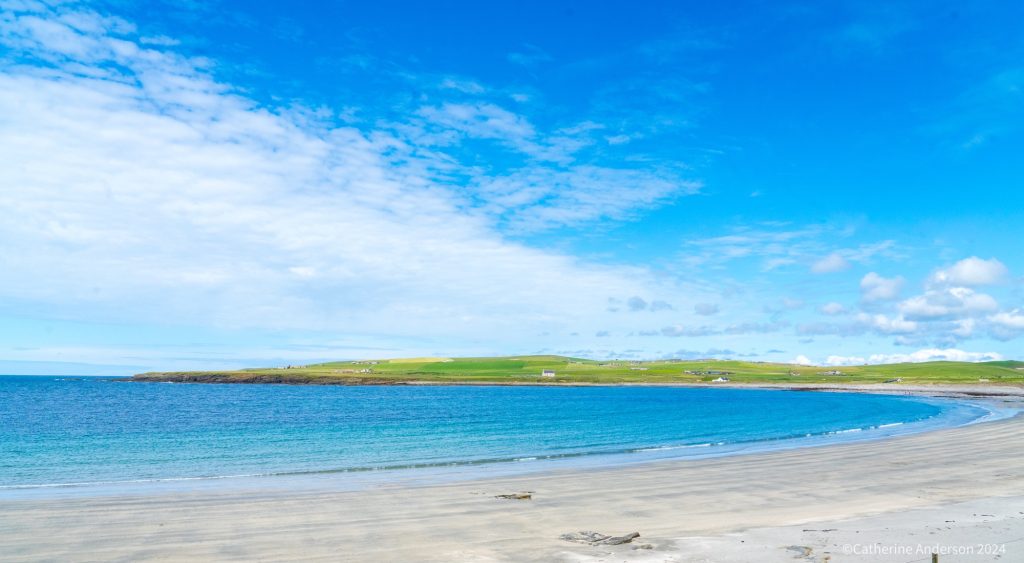
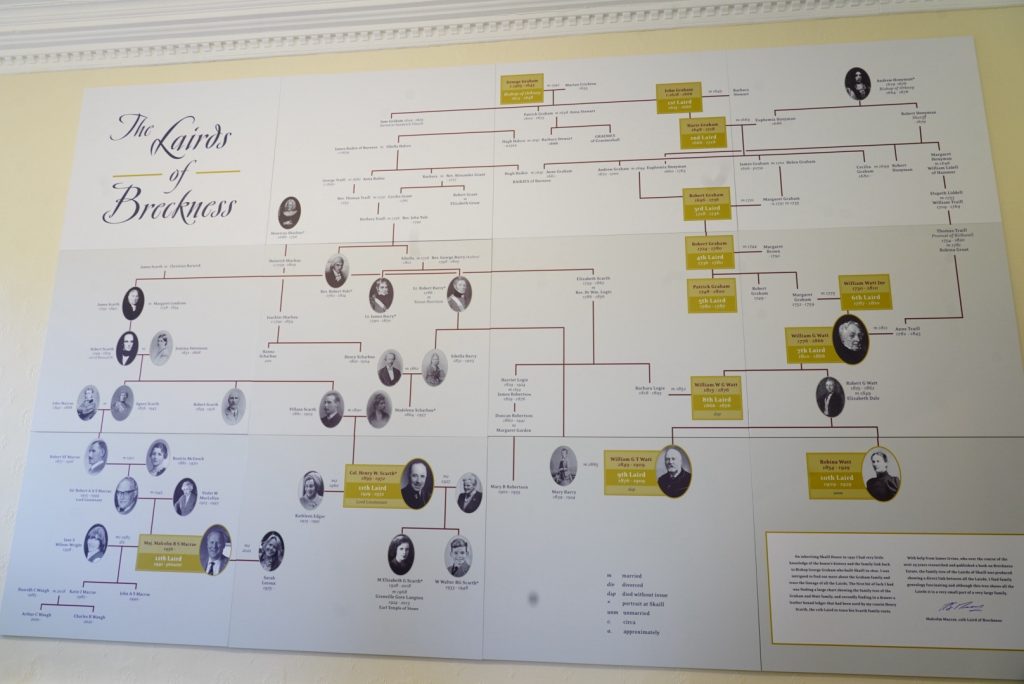
Our route took us on another short walk, this time to another magnificent sea stack along the coast, with some fauna and flora unique to Orkney along the way.
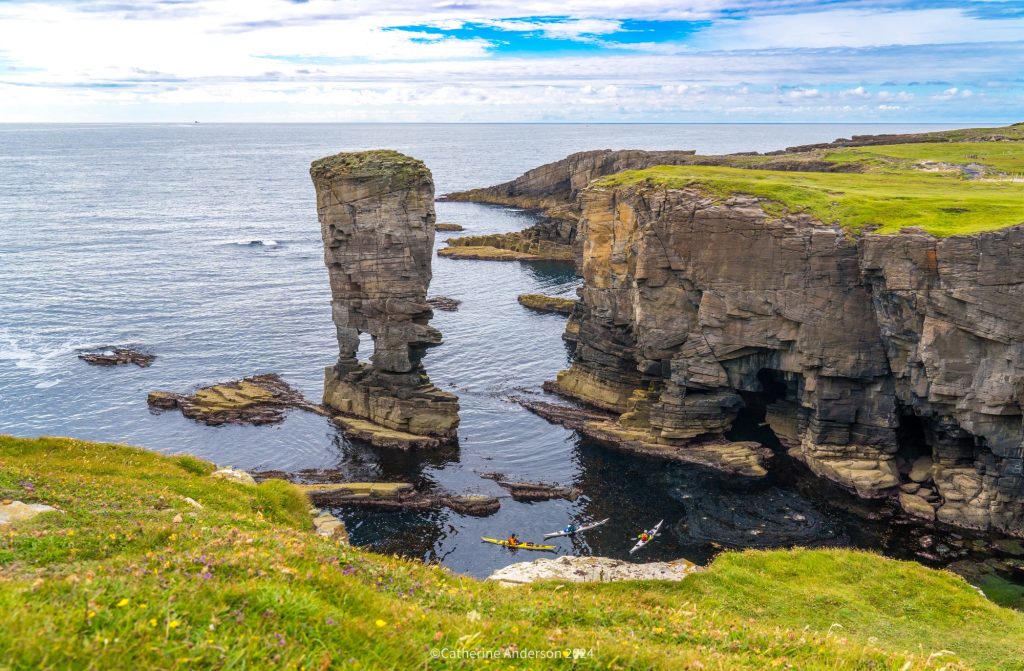
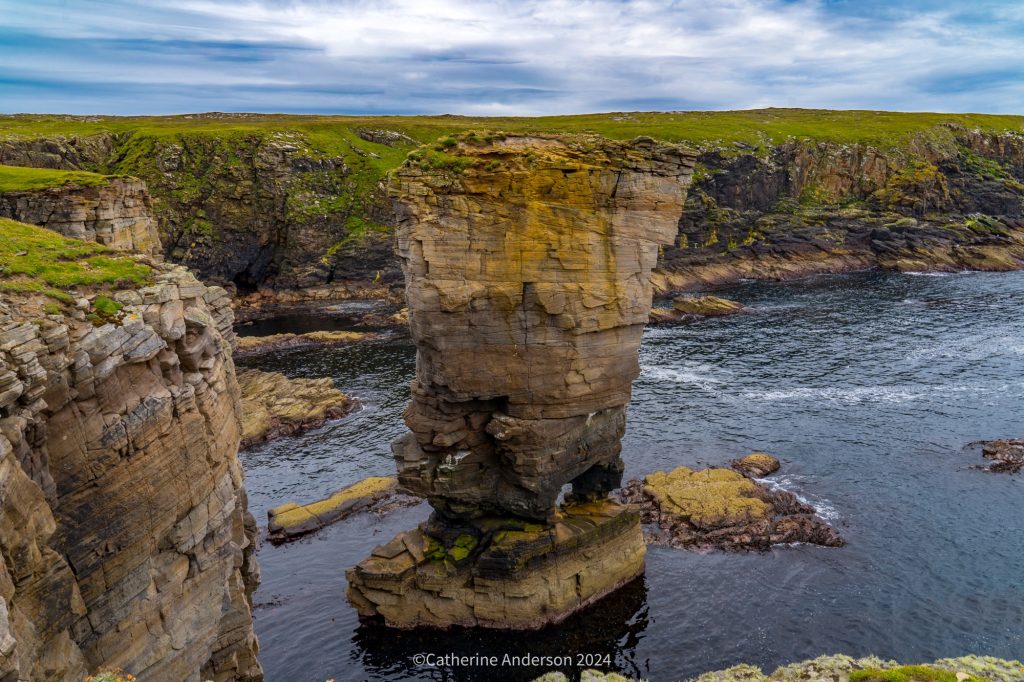
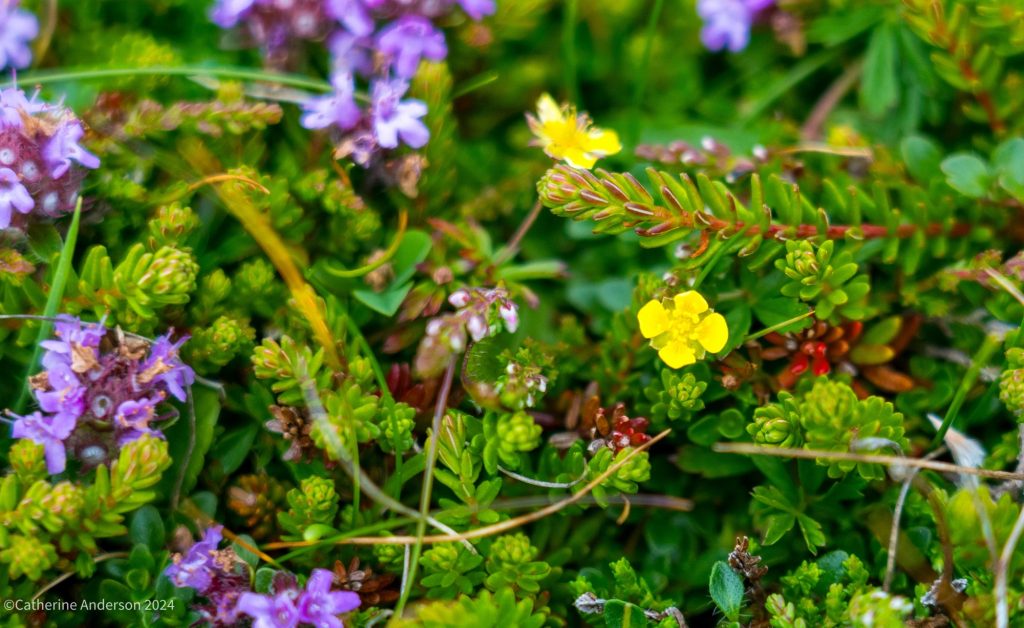
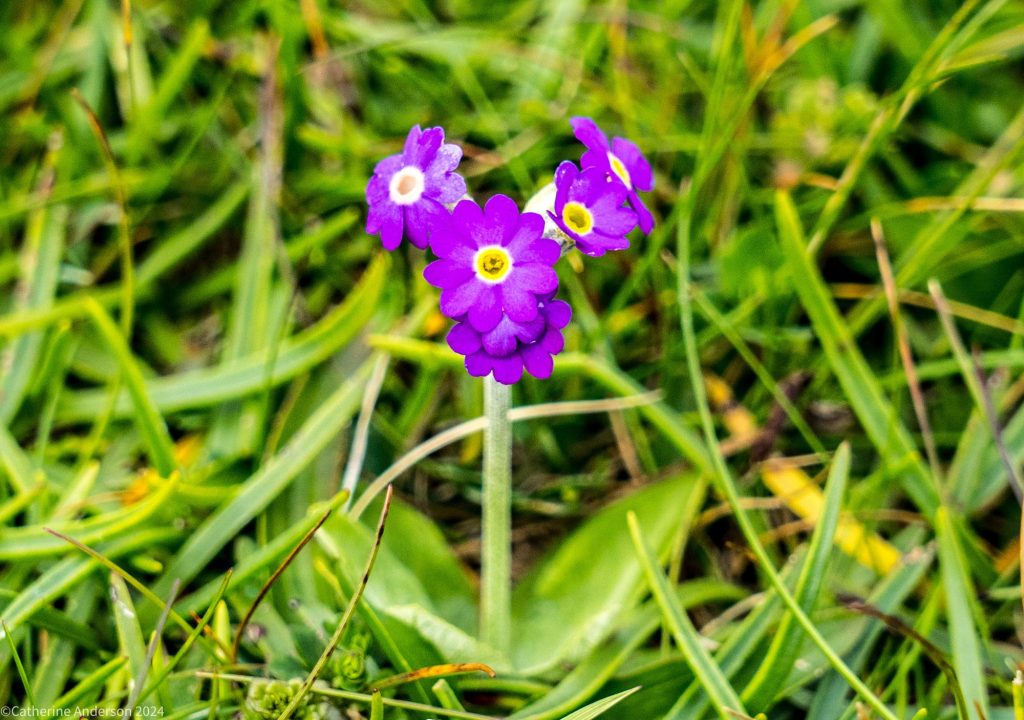
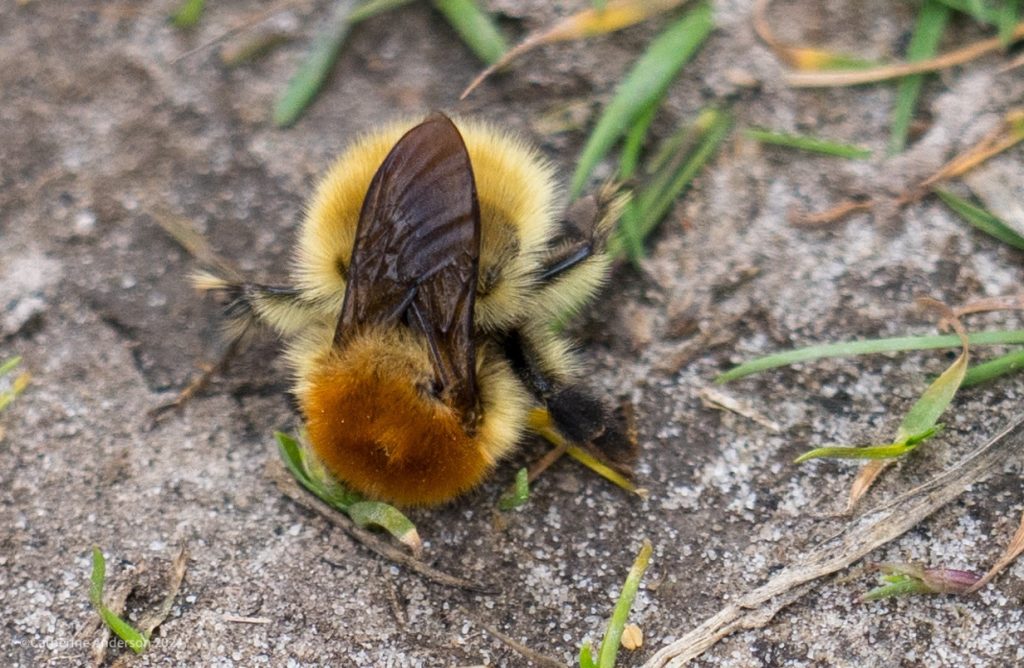
We jumped back into the bus for our final destination for the day, the small town of Stromness, where more people from my family tree lived, and then sailed from to Canada to become founding members of the European settlers there.
It was just spine tingling seeing the well from which the ships would have filled up their water for the journey, and finding the oldest house in Stromness, which would have been modern in my ancestors time, and perhaps somewhere they would have visited.
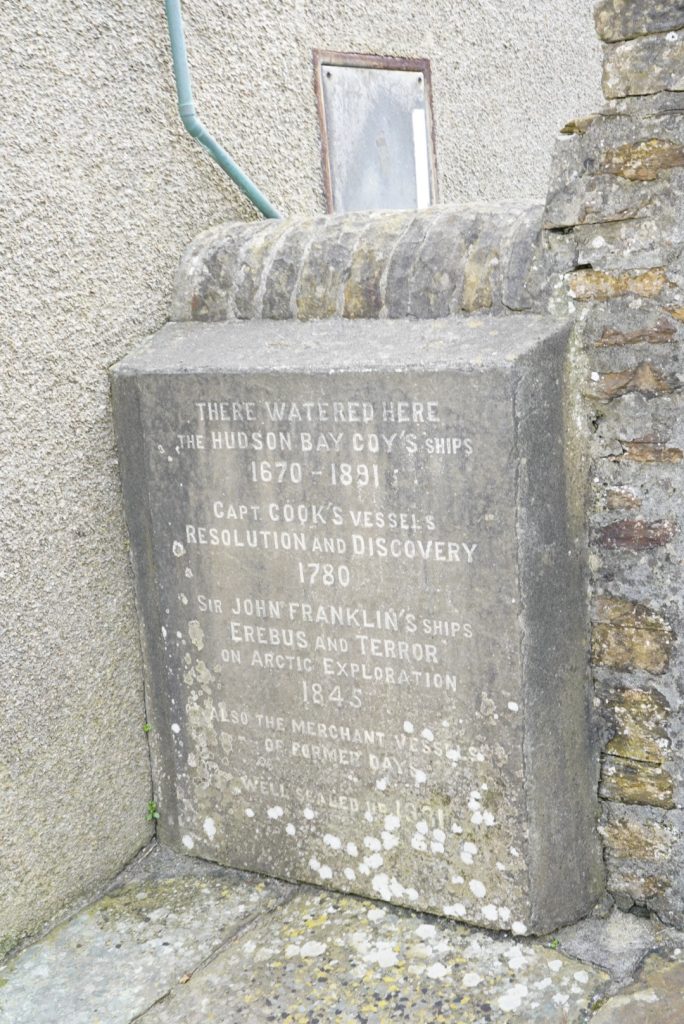
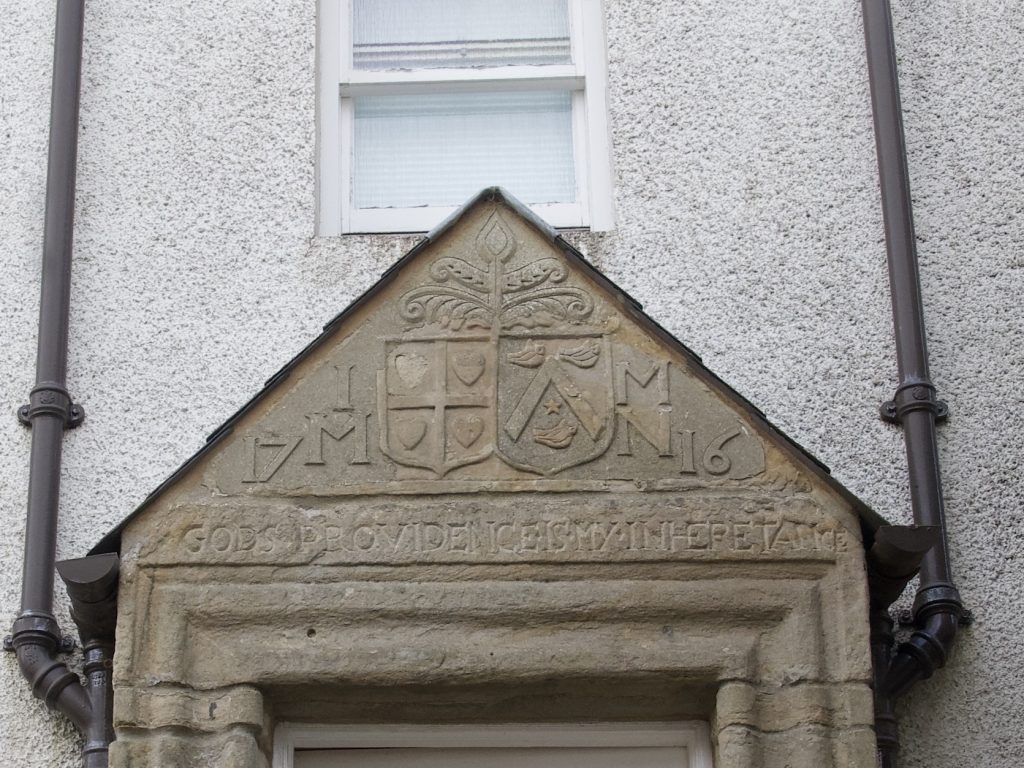
It’s easy to delve down rabbit holes on the interweb and a quick read about the time my ancestors would have lived there reveals a town with no sewerage, little fresh water, and no indoor sanitisation. Not a hard place to leave, once would assume, when invited to settle a new land with the promise of fine farmland and adventures across the oceans.
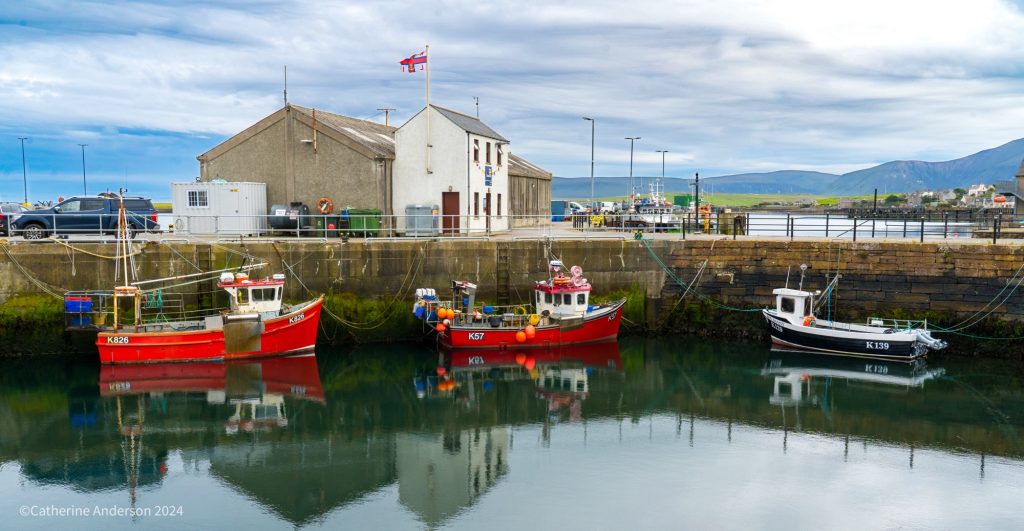
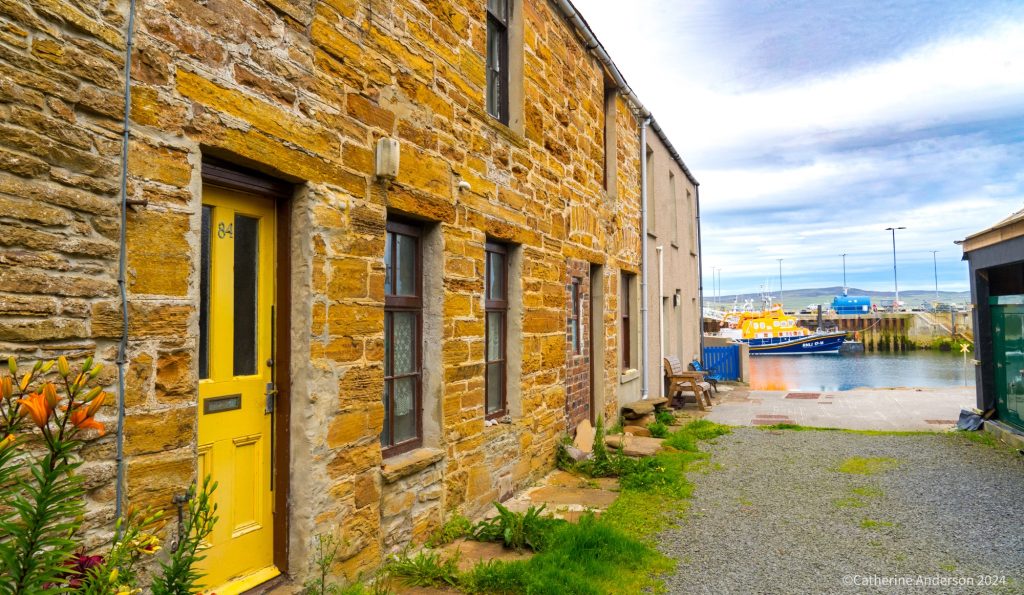
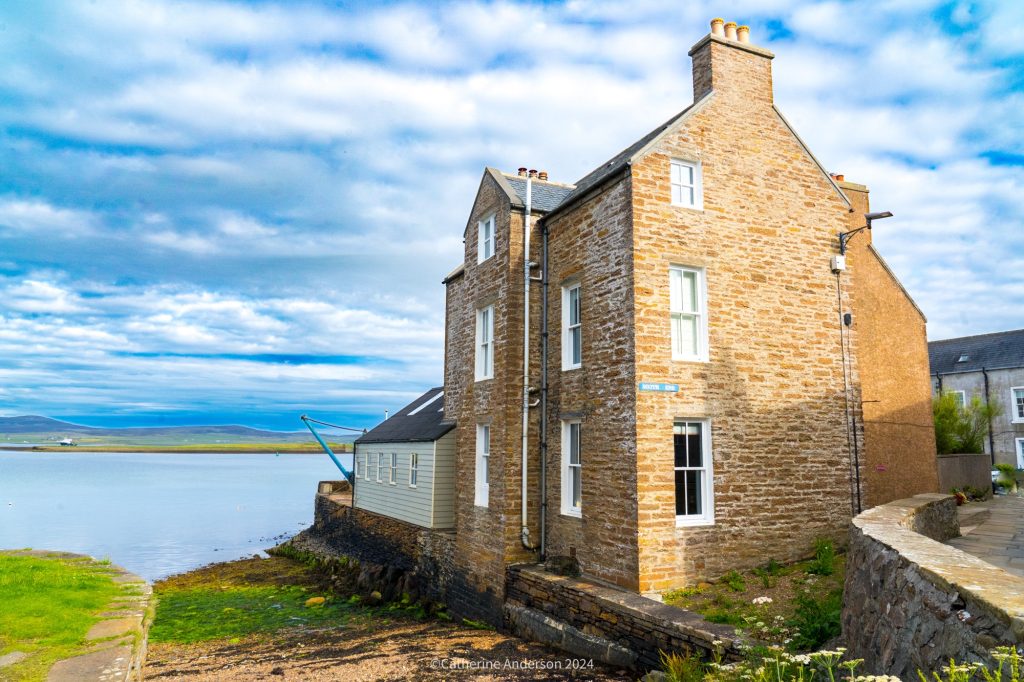
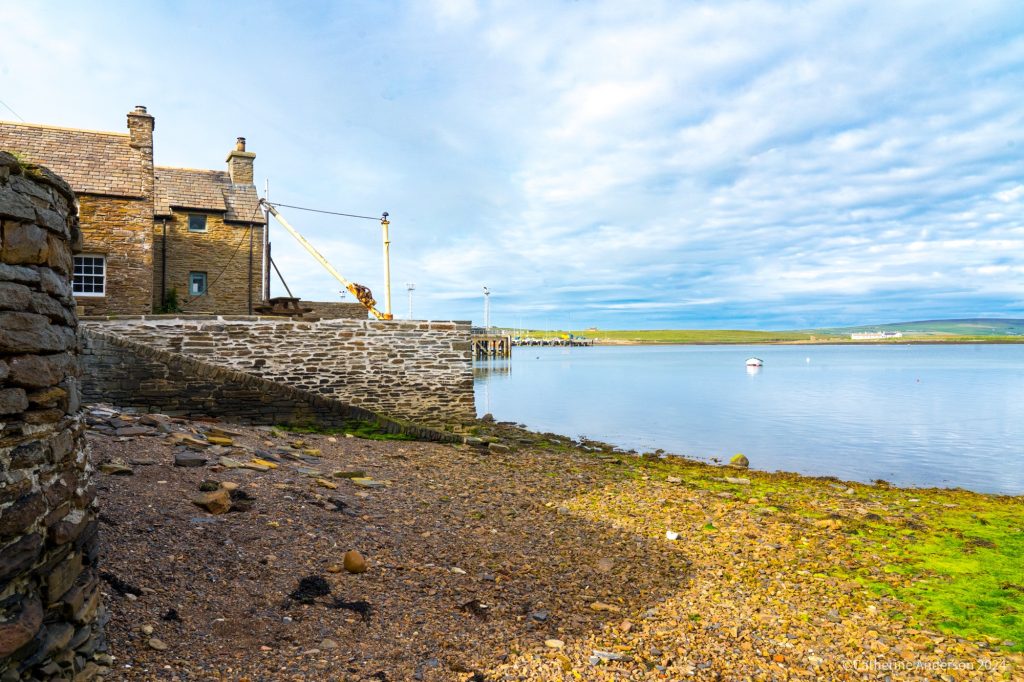
A pub dinner concluded our amazing day, and again we were home in time for sunset, just after 10pm.

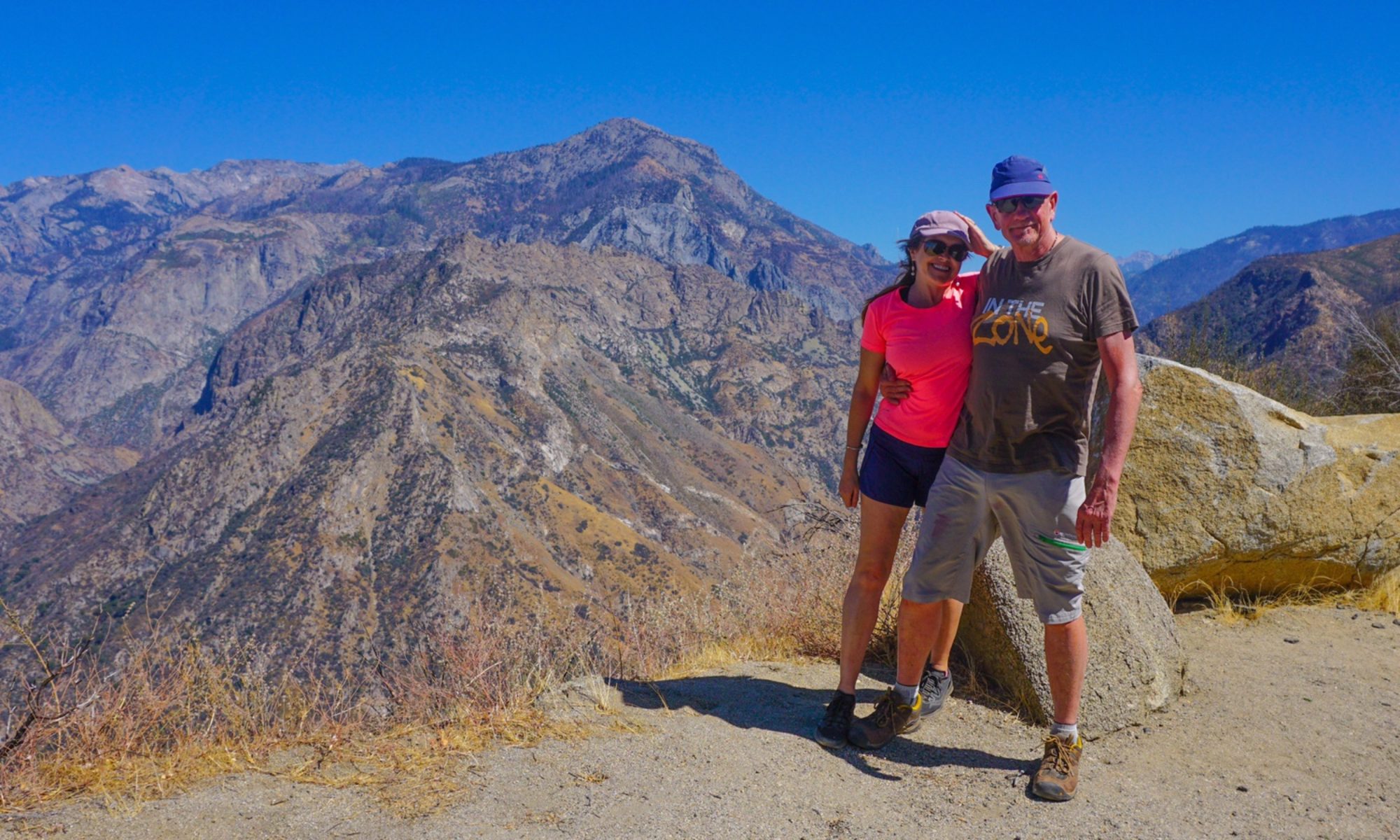
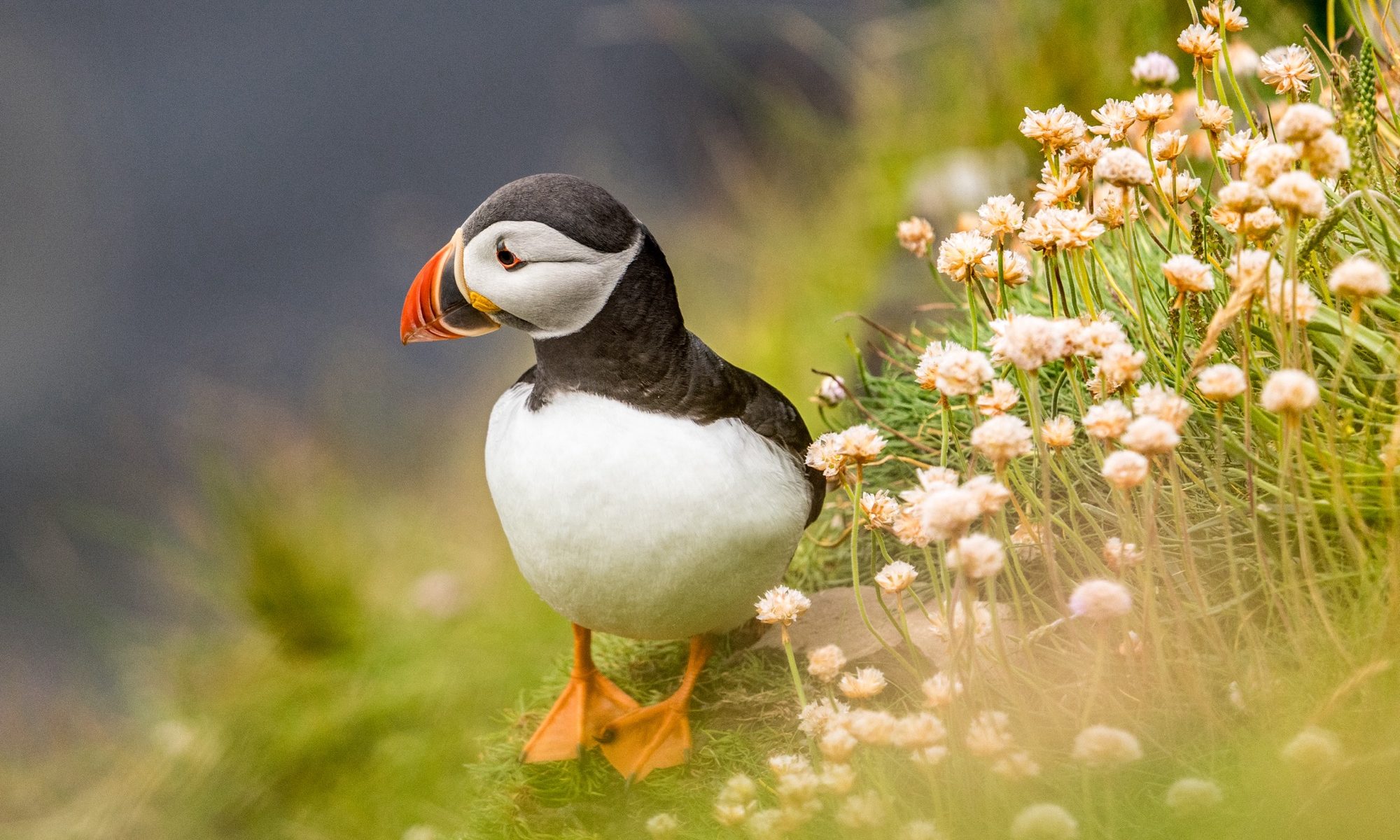
How amazing. Always interesting. Love to you both. Xx
Aw thank you Wendy – would love to see you in a few months on our visit back down under? xx
Terrific commentry& fabulous photos Thanks for sharing cheers to you both nightjar Bob, only seems like we were photographing the nightjar at Crystal creek, nightjar is not about, think Rodney may have removedit. I can only hobble around with aid of a walking stick, some Trajenta tablets for my diabeties stuffed my joints cheers Bob
Sad to hear about the missing nightjar, and of your painful joints. At least you can move areound a little with your stick, would be awful to be immobile. Hopefully you’re still photographing your birds? xx
What a remarkable holiday
What delightful photos and commentary! Especially love the puffin photos, adorable. After a wonderful trip to the Shetland Islands last year we planned to visit the Orkney Islands at some point…. after seeing your post we are planning for next July! Thanks for sharing your adventures and inspiring us!
By the way, you may recall we briefly discussed Harris Gin long ago, and I am happy to report that it is now available in the US 🙂
Oh that’s exciting! We were planning to go to Shetland after Orkney, and even had flights booked, but then couldn’t find any accommodation! We tried to book some in January for July and were told ‘most people book in advance’! So booking now for next year sounds like a good idea 🙂 I still have a return flight….I just keep moving it!
We are running into the same issue in Stomness for next July – many places fully booked.
When you do make it to Shetland I highly recommend staying at Burrastow House in Walls. It is a bit remote but lovely and the owner is an excellent chef and host. We had our own car as I was with relatives from England so we took it on the ferry to Lerwick. Hope you make it next year!!
Do you have any advice on where to stay or eat in the Orkneys?